Well within the heart of winter in the Northern Hemisphere, February is typically a pretty quiet month in America’s national parks. In fact, only January tends to be even less crowded, with December a close third.
Many parks are covered by a thick layer of snow in February, while others are chilly, if not downright freezing cold. In many cases, outdoor activities are limited to snowshoeing, cross-country skiing, and some occasional wildlife watching.
However, there’s also a completely different side to America’s sprawling National Park System in winter. While the majority of parks are in their low season, there are also several that are at their most beautiful and enjoyable in February.
In this blog post, you’ll find the absolute best national parks to visit in February. These are places that are sunny, have (relatively) high temperatures, and offer a wide variety of outdoor recreation this time of year.
For example, in February you can go hiking in Death Valley, canoeing in the Everglades, snorkeling in the Virgin Islands, and sightseeing in the Hawaiian national parks, among many others. There are plenty of amazing national park destinations—even in February!
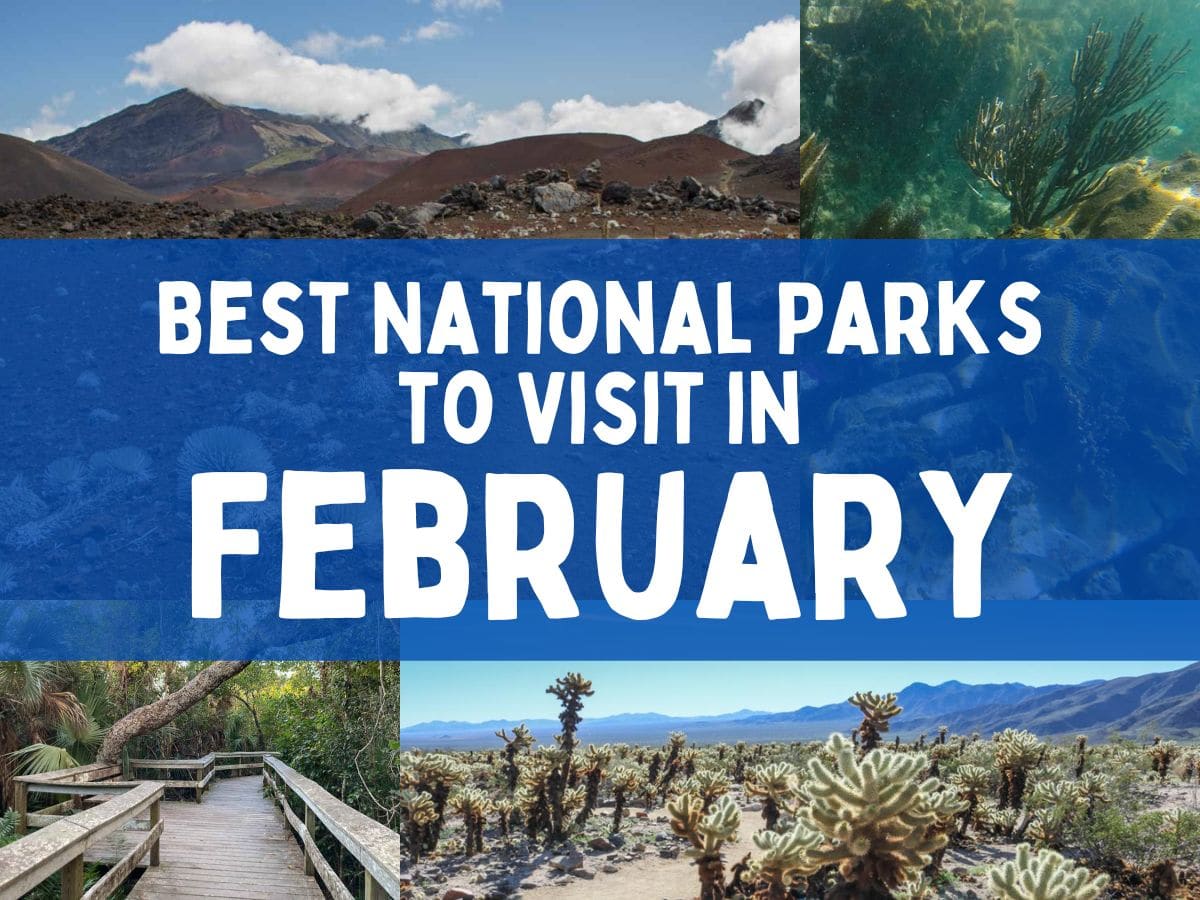
This blog post about the best national parks to visit in February contains affiliate links. If you click on one of those links and make a purchase from one of our partners, we may earn a commission, without any extra cost to you. This helps support this website and ensures fair compensation for our team.
Contents
- Planning a Visit to National Parks in February
- 13 Best National Parks to Visit in February
- 1. Big Bend National Park, Texas
- 2. Biscayne National Park, Florida
- 3. Death Valley National Park, California
- 4. Dry Tortugas National Park, Florida
- 5. Everglades National Park, Florida
- 6. Gateway Arch National Park, Missouri
- 7. Haleakalā National Park, Hawaii
- 8. Hawai‘i Volcanoes National Park, Hawaii
- 9. Joshua Tree National Park, California
- 10. Mammoth Cave National Park, Kentucky
- 11. Pinnacles National Park, California
- 12. Saguaro National Park, Arizona
- 13. Virgin Islands National Park, U.S. Virgin Islands
- When to Visit National Parks
Planning a Visit to National Parks in February
While many national parks shut down—either partially or entirely—during winter, others are among the greatest places to visit in February in the United States.
Thanks to the incredible diversity and wide geographic range of the National Park System, you’ll always find one or more parks to visit, no matter what month or season it is.
February is usually a very quiet time in America’s national parks. Several parks have (very) limited access due to severe winter weather, while others—especially the (sub)tropical and desert parks—are in their absolute prime in February.
February is generally a great month to enjoy a quiet national parks experience, while it also offers a few more options than December or January.
On average, February has one of the lowest visitation numbers across the National Park System.
Many destinations are in their low season, which means that prices for accommodation, flights, and car rentals are potentially significantly lower than in the peak summer months. That said, though, winter storms might cause delays this time of year, so be flexible in your plans.
The following overview of the best national parks to visit in February mainly features parks that offer a getaway from winter weather elsewhere. Most of them are in the country’s warmer and less snowy regions, whether it’s the Southwest, Caribbean, Florida, or Hawaii.
13 Best National Parks to Visit in February
So, which national parks are best to visit in February? Whether you’re looking for a winter hiking holiday or want to soak up some tropical sunshine, there are several options for you below:
- Big Bend
- Biscayne
- Death Valley
- Dry Tortugas
- Everglades
- Gateway Arch
- Haleakalā
- Hawai‘i Volcanoes
- Joshua Tree
- Mammoth Cave
- Pinnacles
- Saguaro
- Virgin Islands
For each of these top national parks to visit in February, I’ve also included some basic information, such as expected crowds (based on historical visitation data), typical weather, and—not unimportant—the average sunrise and sunset times in the park.
NOTE: While the national parks below are all amazing in February, it’s important to keep in mind that there’s always a possibility of travel disruptions. Winter weather might cause flight delays or cancellations, even if there’s no severe weather at your departure or arrival airports. Additionally, it’s also possible that some areas in certain parks, including roads and trails, may be temporarily closed. I always recommend checking each specific park’s website for more information about current conditions and road closures.
1. Big Bend National Park, Texas
Location: Southwestern Texas
Expected Crowds: Moderate
Weather: The average high temperature is 67.7°F (20°C), while the average low temperature is 41.7°F (5°C). The monthly precipitation average is merely 0.38 inches (9.7 mm) in total. Snow is rare but possible in February, especially at the park’s higher-elevation areas, so visitors are encouraged to prepare for a variety of weather conditions.
Average Sunrise Time: 7:33 am
Average Sunset Time: 6:40 pm
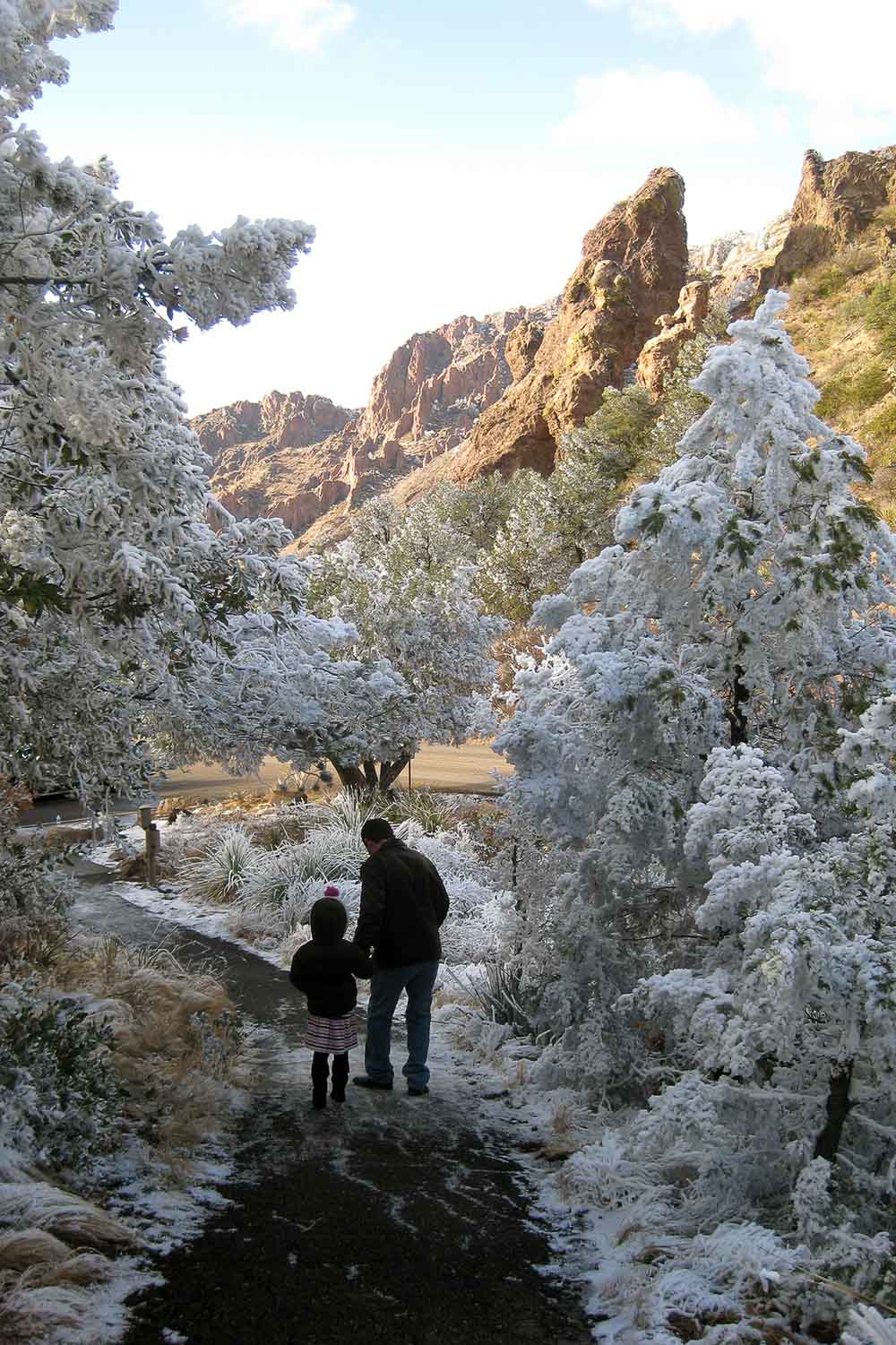
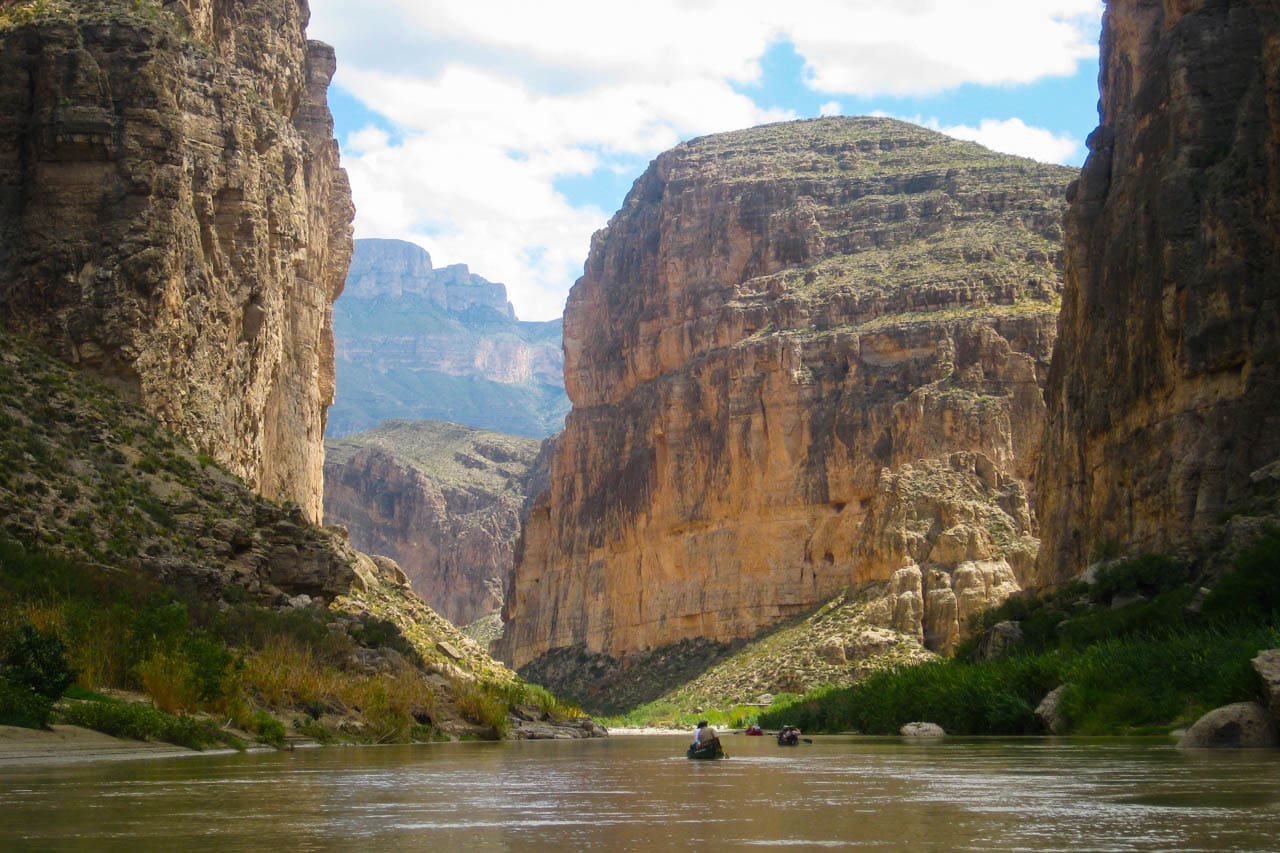
Visiting Big Bend National Park in February
Winter in Big Bend National Park is usually sunny, pleasant, and mild. Although days with clouds and near-freezing temperatures do occasionally occur, the general Big Bend National Park winter weather is relatively warm and enjoyable.
Average maximum temperatures for February are well in the 60s, while this is also one of the driest months in Big Bend. Although February is among the coolest months of the year, temperatures are typically still pretty enjoyable during the day.
Snowfall is pretty rare and, when it does occur, is usually quite light. This makes February a fantastic time to go hiking and boating in Big Bend.
The National Park Service does advise February visitors to prepare for a variety of weather conditions, though. On any given day in February, temperatures can vary from below freezing to well into the 80s, depending on both weather conditions and elevation.
Besides hiking and boating, there are many other ways to explore and enjoy these spectacular canyons, rugged desert plains, and mountains on the border of the U.S. and Mexico. Those include bird watching, fishing, stargazing, horseback riding, and scenic drives.
All in all, Big Bend National Park in February is nothing short of beautiful. Provided you’re prepared for both sunshine and snow, it’s an amazing month to visit this underrated and less-visited park in southwestern Texas.
More About Big Bend National Park
2. Biscayne National Park, Florida
Location: Southern Florida
Expected Crowds: Moderate
Weather: The average high temperature is about 77°F (25°C), while the average low temperature is 62°F (17°C). February is one of the driest and sunniest months in Biscayne, with a total amount of precipitation of approximately 1.6 inches (40.6 mm) throughout the entire month.
Average Sunrise Time: 6:55 am
Average Sunset Time: 6:12 pm
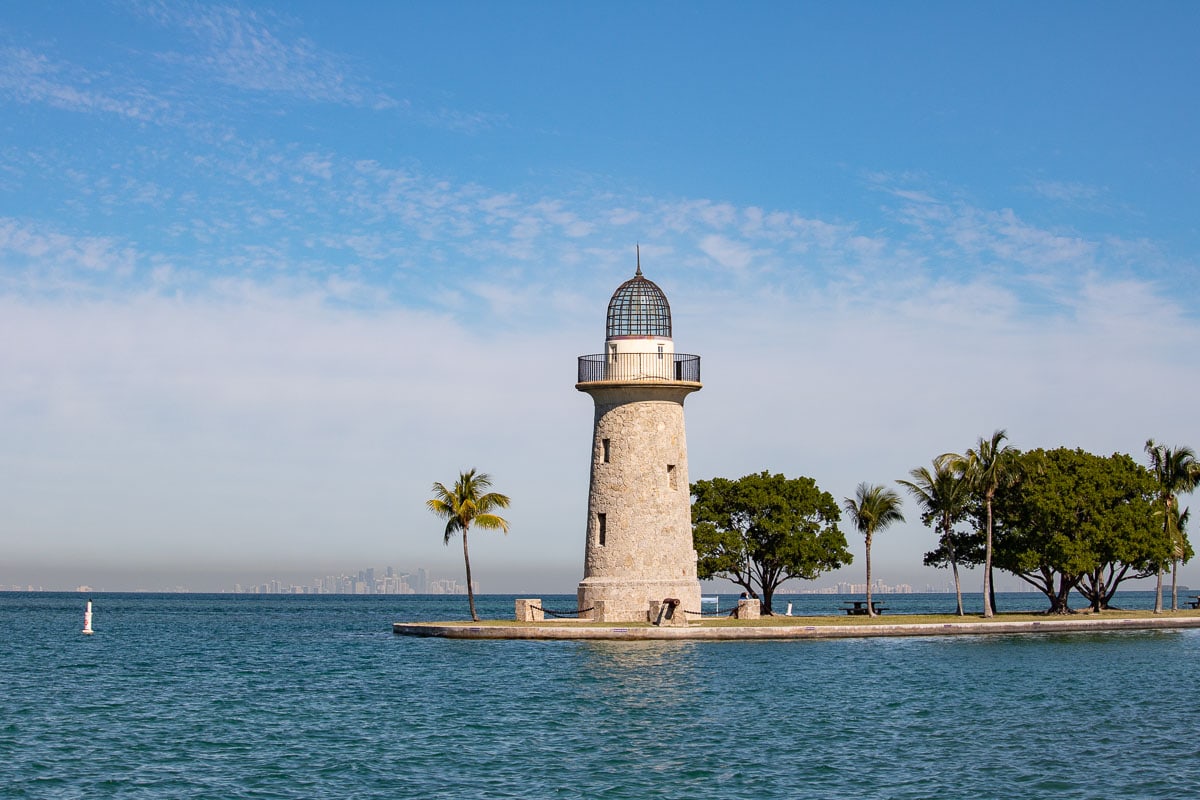
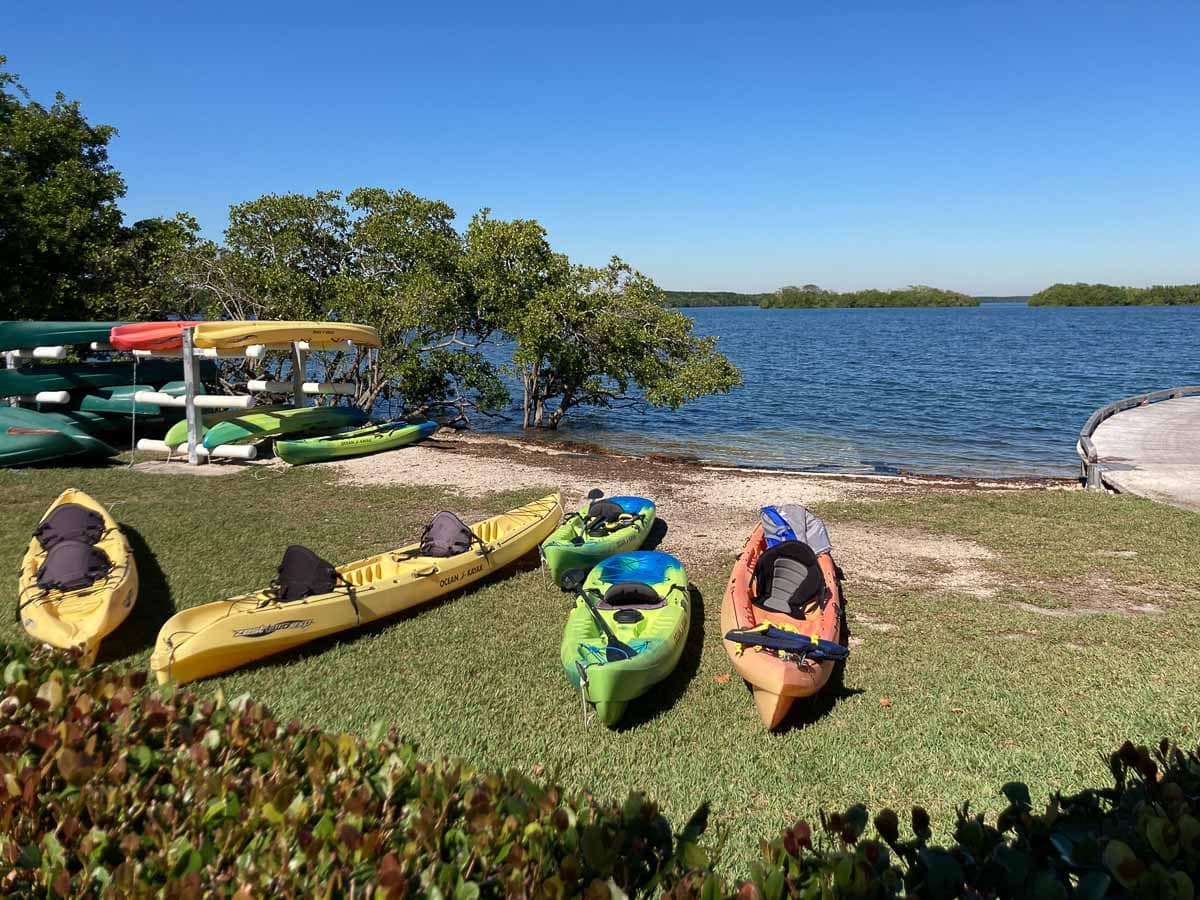
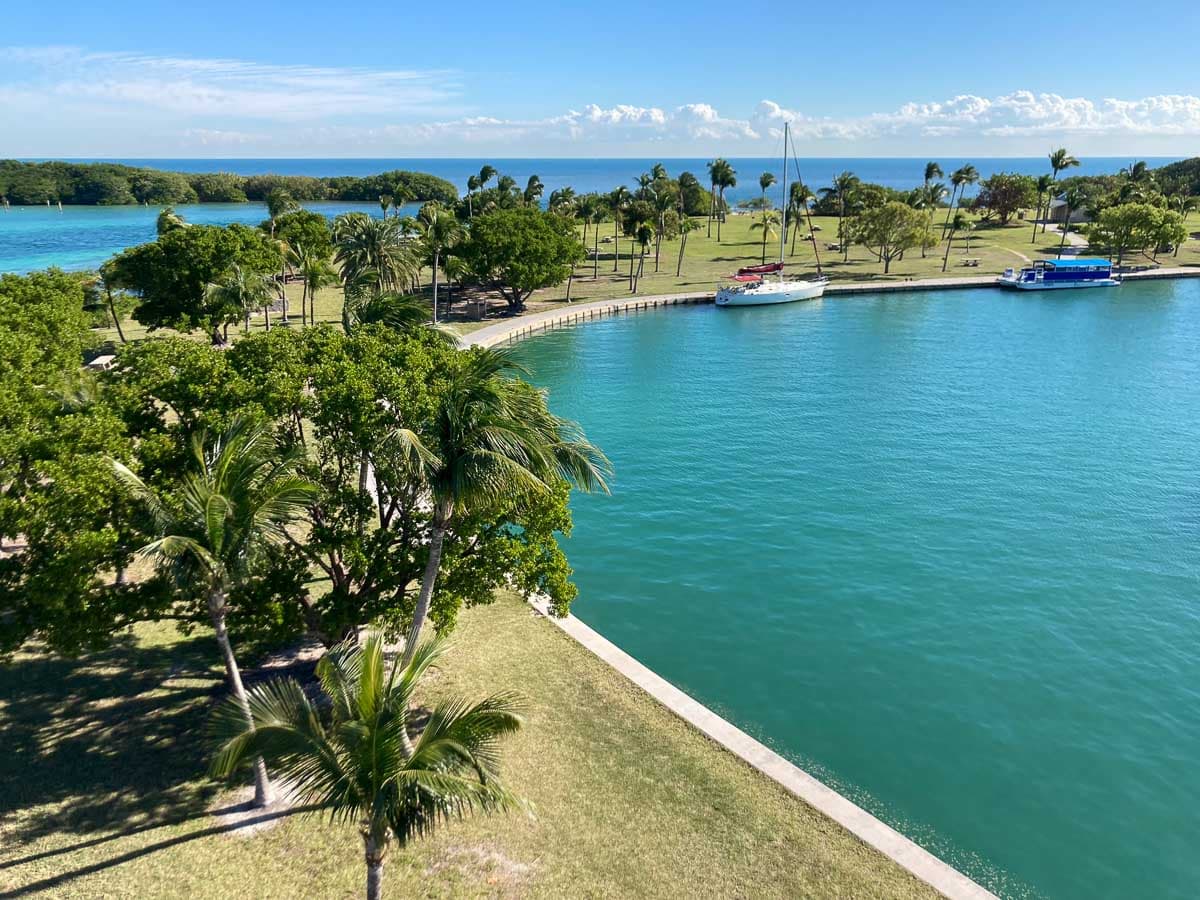
Visiting Biscayne National Park in February
No less than 95% of Biscayne National Park, which is just south of Miami, is water. Only 5% is land, which includes a small stretch of mainland shoreline and several offshore islands. Therefore, the only way to explore and experience Biscayne National Park is on boat trips.
A wide array of excursions leave from the Biscayne National Park Institute near the park’s visitor center, from glass-bottom boat tours to snorkeling and scuba diving trips and sailboat outings.
On these boat tours, you can enjoy the stunning seascapes of Biscayne Bay, both from the boat itself and in the water. This park offers some of the best snorkeling and diving in the world, though the best underwater visibility does occur in summer.
Winter is a great time to visit Biscayne National Park thanks to southern Florida’s amazing subtropical climate.
February is in the middle of the dry season in this part of the country, meaning that a visit to Biscayne National Park in February comes with warm weather and tons of sunshine. For instance, February is one of the least rainy months in Biscayne National Park—only December and January are (slightly) drier.
More About Biscayne National Park
- Park Website
- Travel Guide
- Top Things to Do in Biscayne National Park
- How to Visit Boca Chita Key
- Accommodation
3. Death Valley National Park, California
Location: Southern California
Expected Crowds: Moderate to high
Weather: The average high temperature in Death Valley in February is a very comfortable 73°F (23°C), while the average low temperature is 46°F (8°C). The monthly precipitation average is merely 0.37 inches (9.4 mm) in total. Rainfall is rare and sunshine common, although occasional winter storms are possible in February.
Average Sunrise Time: 6:36 am
Average Sunset Time: 5:26 pm
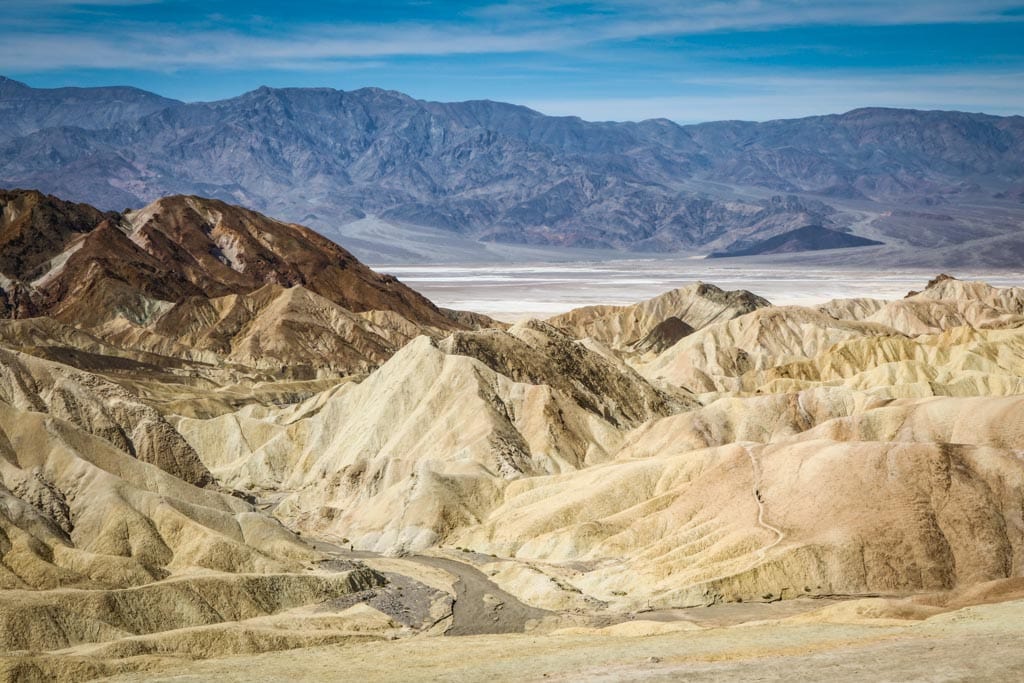
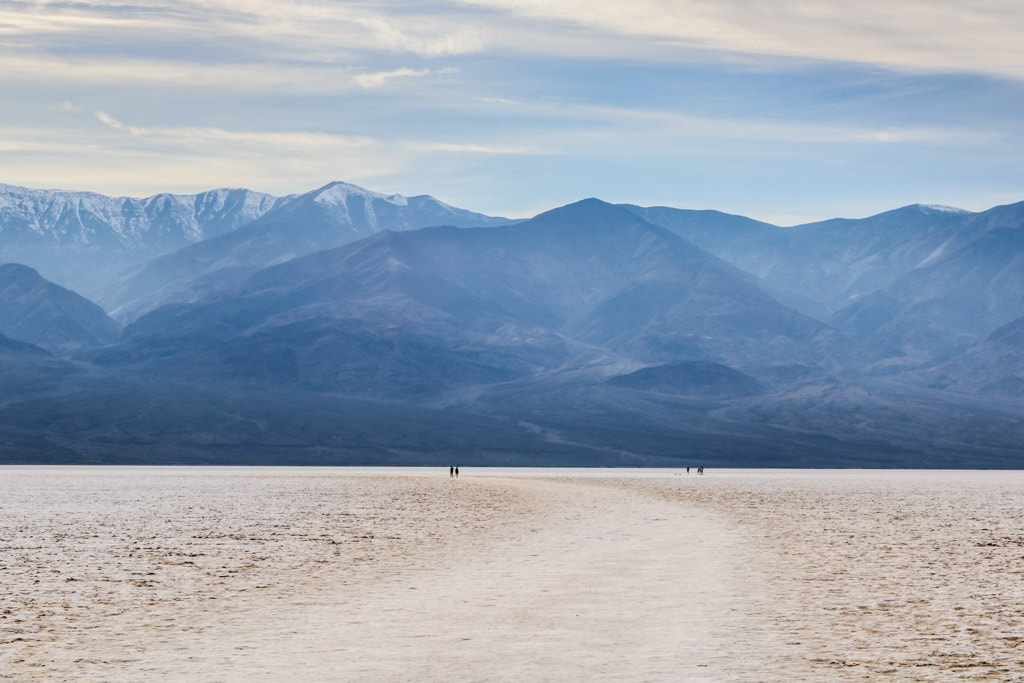
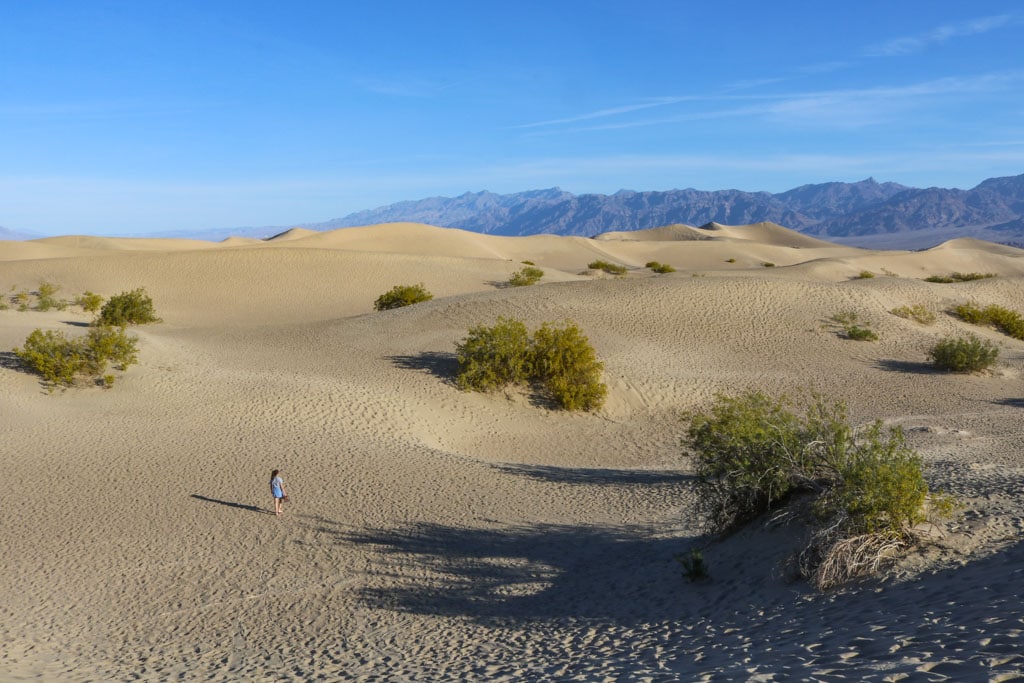
Visiting Death Valley National Park in February
Famous for being both the hottest and driest place in North America, Death Valley is a daunting destination to visit in summer. February, however, is the start of the park’s glorious late-winter/early-spring season.
This time of year, the park’s low elevations have delightful daytime temperatures and overall weather, although nights can sometimes reach freezing. The mountains in Death Valley National Park are significantly cooler, though, and can see occasional snow in February.
“Sunny skies are the norm in Death Valley,” the National Park Service says, adding that “winter storms […] can bring cloud cover and rain.”
Generally speaking, February is one of the best months to visit Death Valley National Park. Compared to most other places in the continental United States, the park is quite warm, wonderfully sunny, and exceptionally dry (except for those occasional winter storms).
Popular February activities in Death Valley include sightseeing, scenic drives, exploring stunning sand dunes, stargazing, and hiking. In fact, this is a superb time of year to hit the many hiking trails in Death Valley National Park!
More About Death Valley National Park
- Park Website
- Travel Guide
- Topographic Map
- Best Death Valley Hikes
- Top Things To Do in Death Valley National Park
- Best Views in Death Valley
- Accommodation
4. Dry Tortugas National Park, Florida
Location: 70 miles west of Key West, southern Florida
Expected Crowds: Low
Weather: The average high temperature is 76°F (24°C), while the average low temperature is 66°F (19°C). Average precipitation through February is 1.63 inches (41 mm), making it the second-driest month of the year after March. Although warm and very dry, winter is also the windiest time of year in this region.
Average Sunrise Time: 7:05 am
Average Sunset Time: 6:24 pm
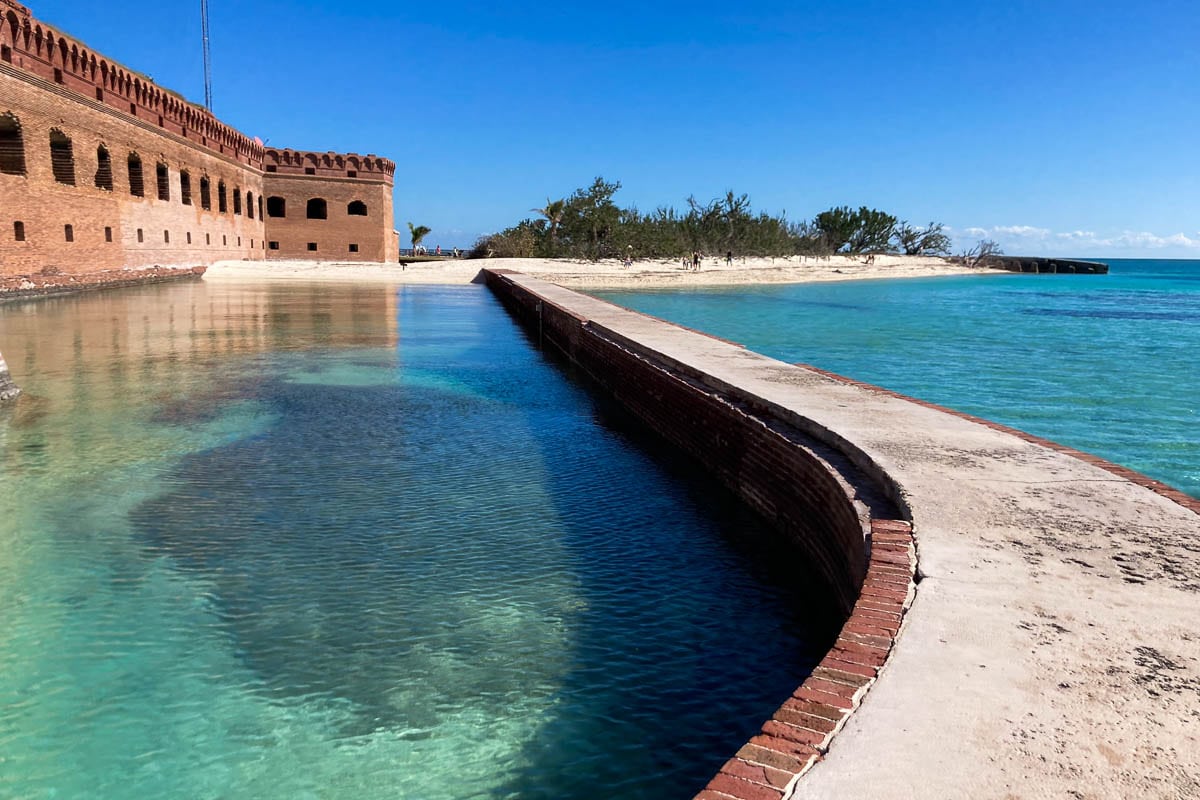
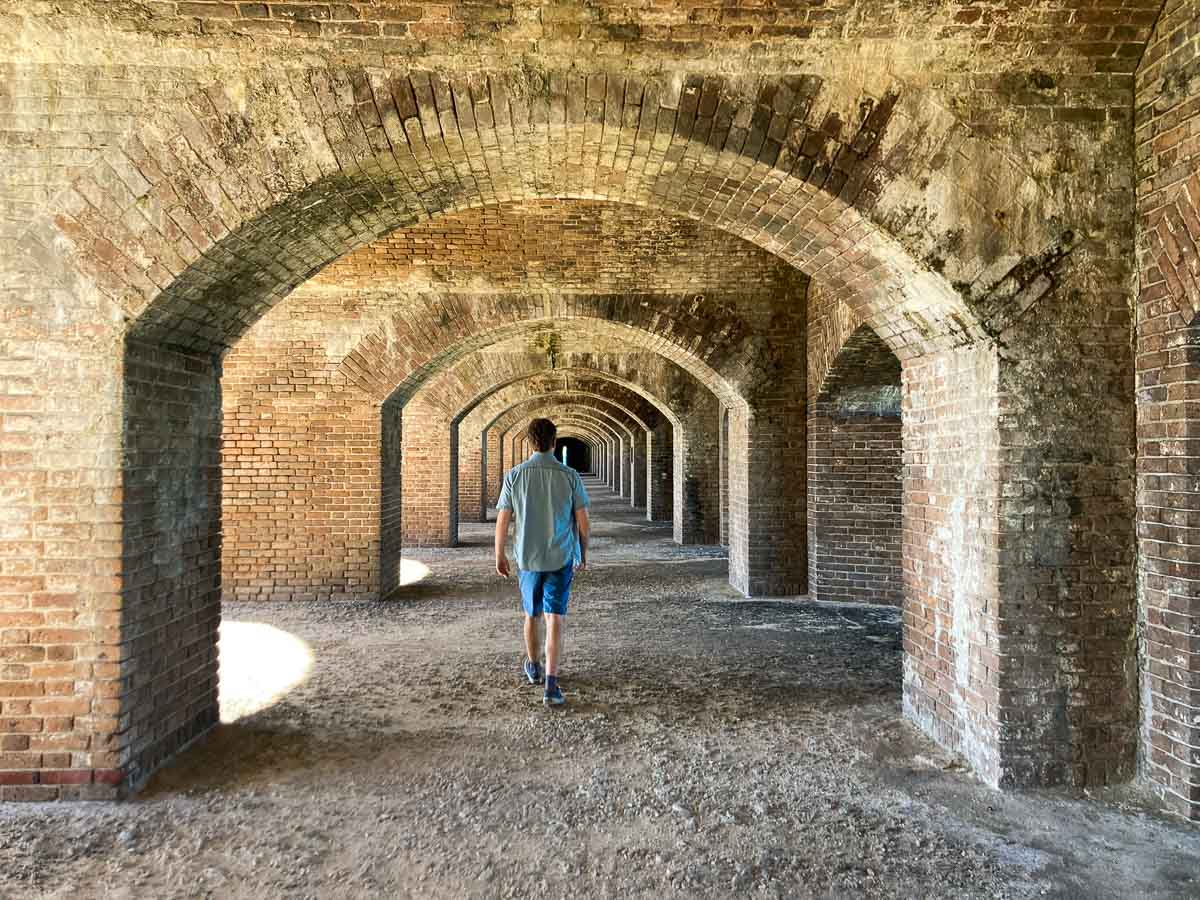
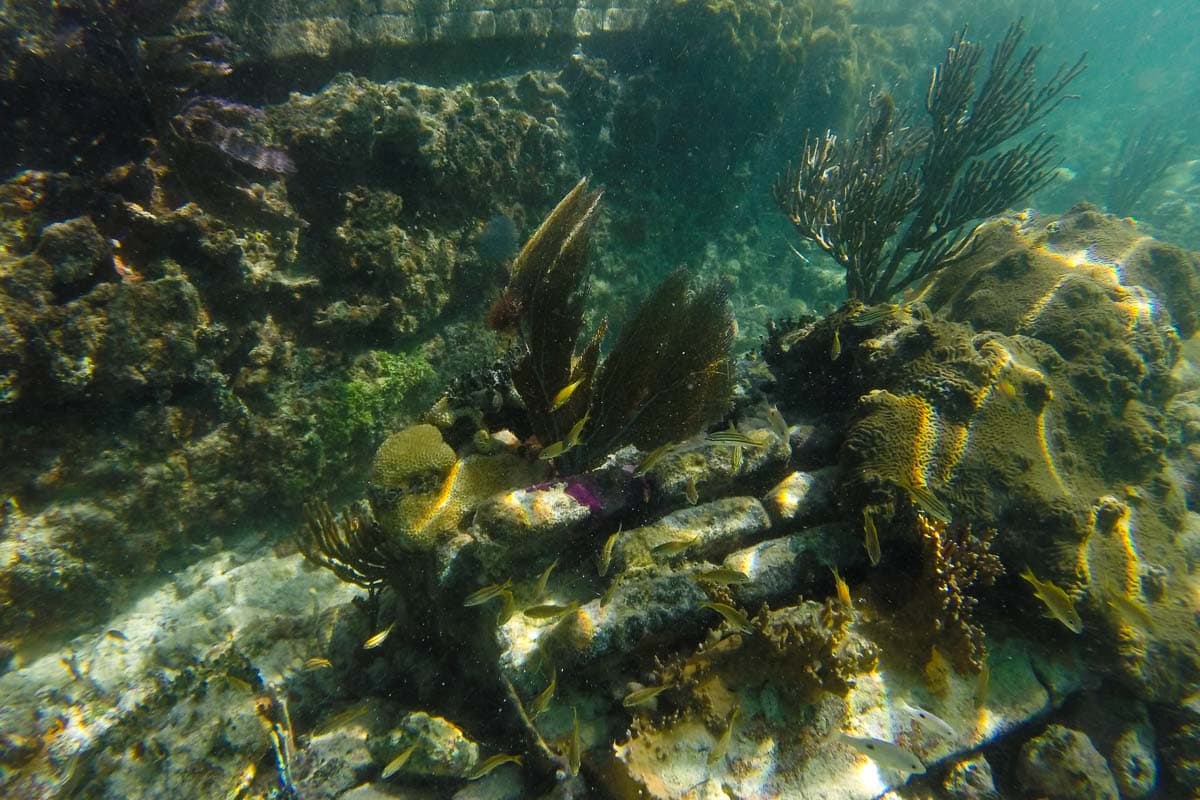
Visiting Dry Tortugas National Park in February
One of the least accessible national parks in the United States, Dry Tortugas National Park is 70 miles west of Key West. It’s only reachable by seaplane or boat.
This is a glorious destination all year, but it’s particularly amazing in winter, not in the least because it’s one of America’s greatest tropical destinations.
The month of February in Dry Tortugas National Park is warm, typically sunny, and—well—dry. The park was named after its dry conditions, specifically its lack of freshwater sources, and the many turtles that frequent its shallow turquoise waters.
From November to April, there can be the occasional windstorm, though, which cause swells and waves, and reduce visibility underwater. That said, however, February is not the hurricane season in south Florida—the hurricane season officially ends on November 30—so you don’t have to worry about that at all.
In general, visiting Dry Tortugas National Park in February is a great idea. It’s literally the best time of year to visit this part of the country.
Throughout the month, you can expect beautiful sunny weather and very comfortable temperatures. Although one of the “coolest” months of the year, February is also one of the months that sees the least precipitation.
Highlights include massive Fort Jefferson, which is the largest brick building in the Americas, stunning beaches, and world-class snorkeling and scuba diving.
Tours, whether by plane or boat, depart from Key West. The Yankee Freedom catamaran is the most popular way to get to the Dry Tortugas from Key West.
More About Dry Tortugas National Park
5. Everglades National Park, Florida
Location: Southern Florida
Expected Crowds: High
Weather: The average high temperature is 80°F (27°C), while the average low temperature is 56°F (13°C). February is the third-driest month in Everglades National Park, after December and January, with a total precipitation of only 1.85 inches (47 mm). The weather is generally sunny, quite warm, and dry.
Average Sunrise Time: 6:59 am
Average Sunset Time: 6:16 pm
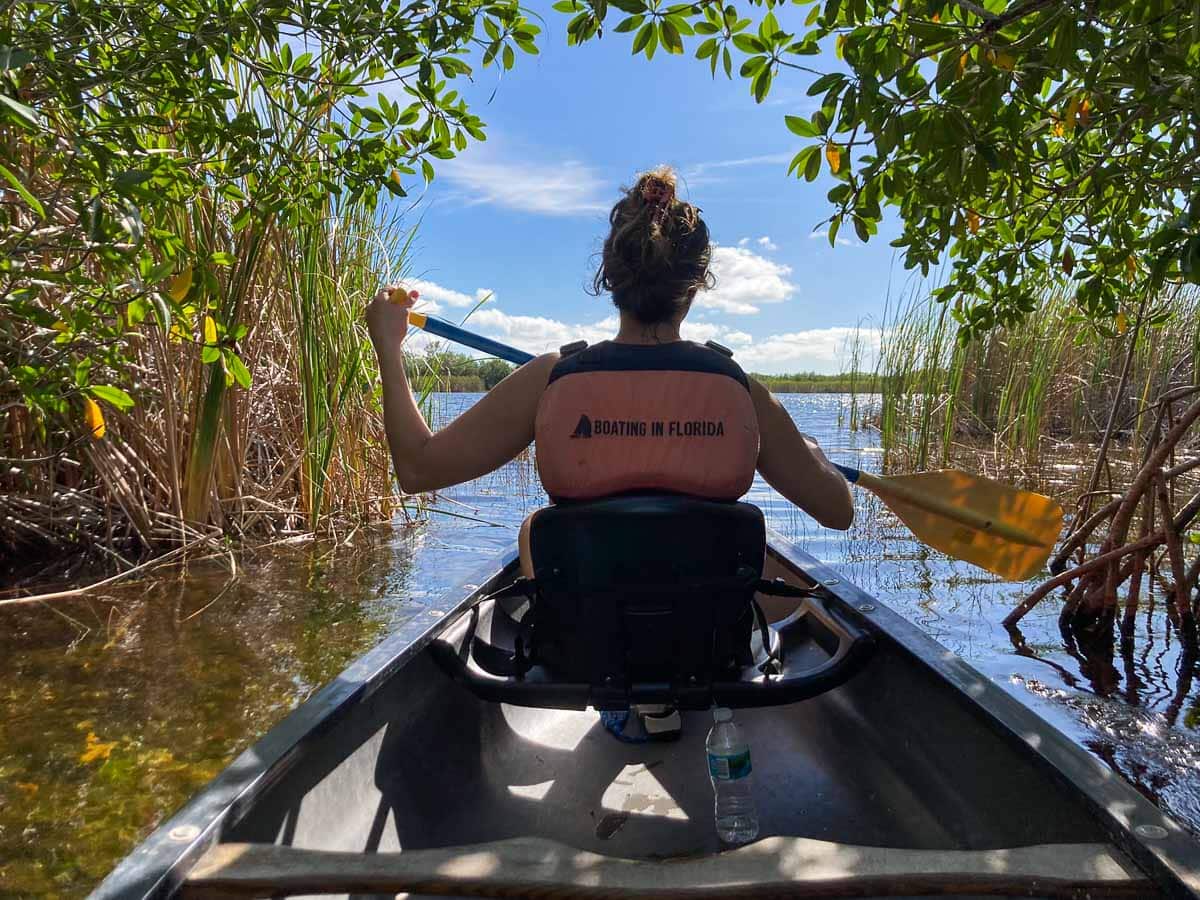
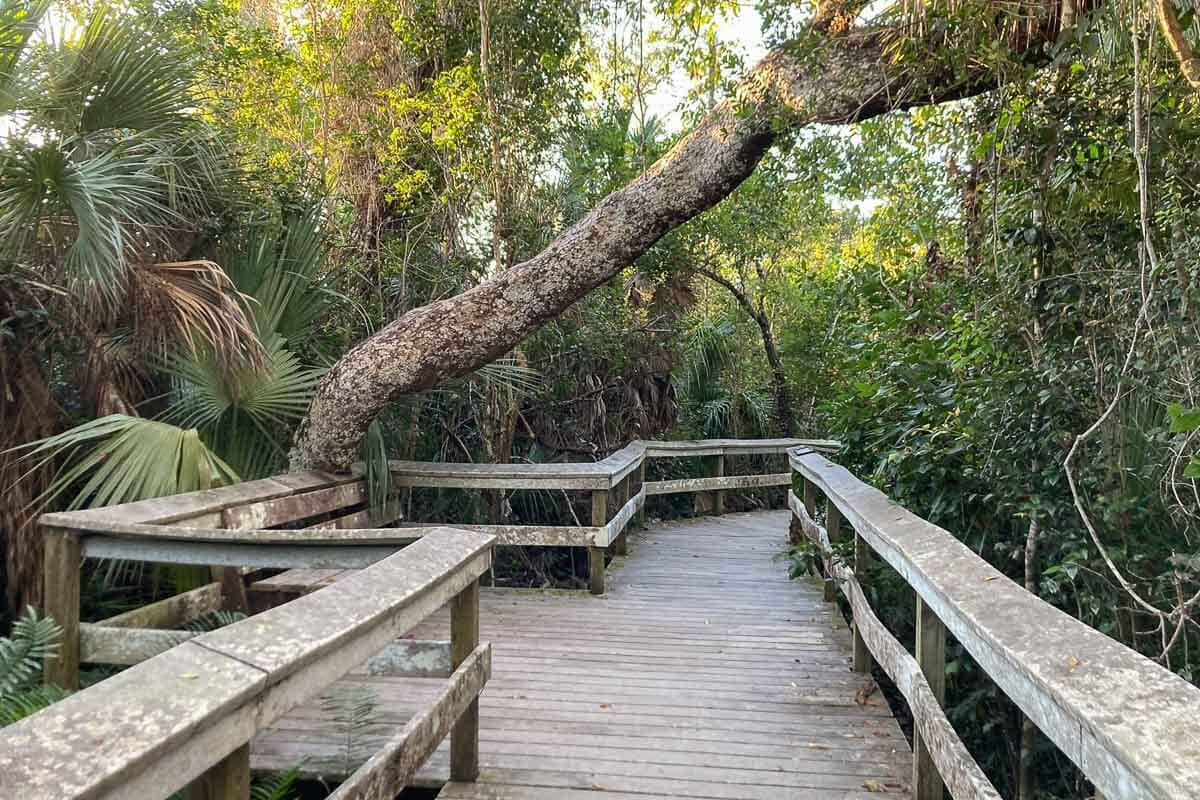
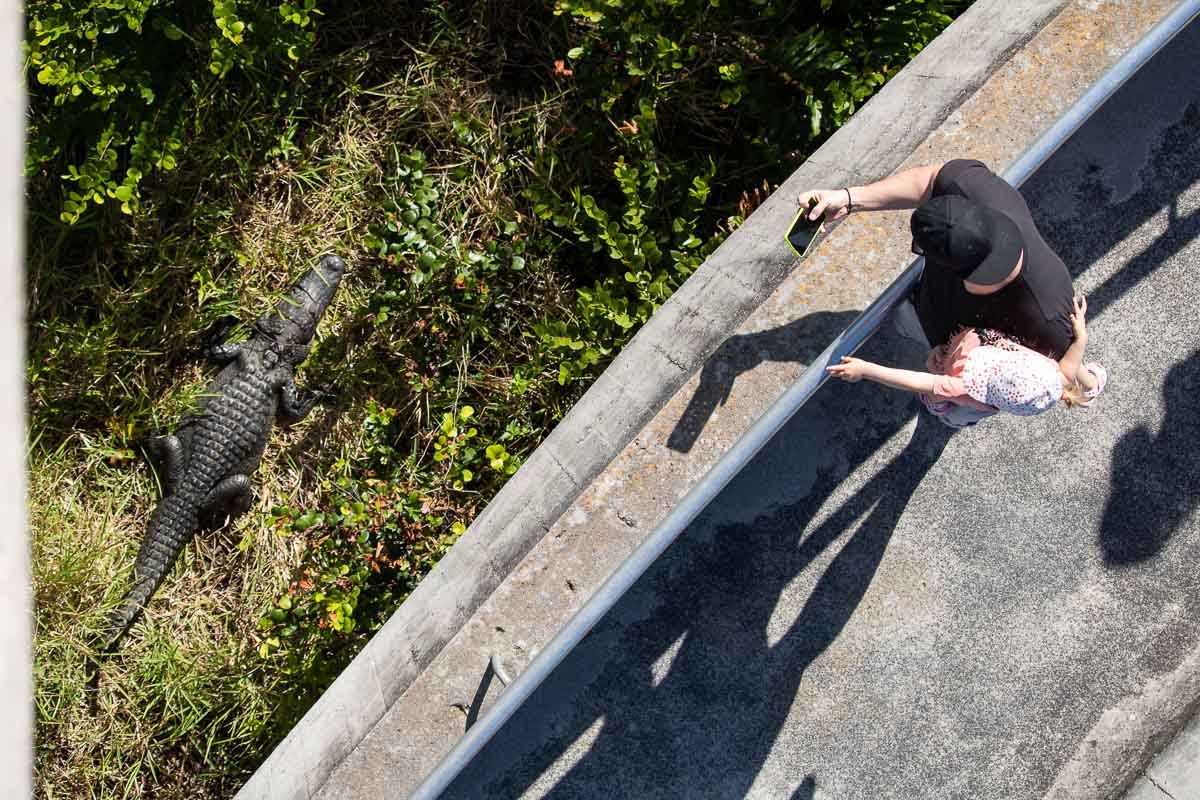
Visiting Everglades National Park in February
This sprawling park southwest of Miami—the third-largest national park in the contiguous United States—can be visited throughout the year, but summer does come with high humidity, hot weather, and relentless bugs.
Winter, on the other hand, has none of that. This is the dry season and there are virtually no bugs, humidity is low, and temperatures are more than comfortable.
Although February is one of the busiest months of the year in Everglades National Park, there are still plenty of opportunities to get away from the crowds.
This is especially true for more remote parts of the park, such as Flamingo and the Ten Thousand Islands, where you can escape other visitors in a canoe or kayak.
The month of February is a delightful time to explore the “River of Grass,” whether you’re going canoeing or kayaking, joining a cruise, or going on a wildlife excursion.
Both a UNESCO World Heritage Site and International Biosphere Reserve, Everglades National Park encompasses one of the world’s most important wetland regions. For one, this is one of only a few places on Earth where both alligators and crocodiles live. Other marine animals you might spot include manatees, sharks, and dolphins.
Everglades National Park is also renowned around the world for its sheer abundance of birds. More than 300 species of birds call the park home, many of which you can see in winter.
High-profile birds in the Everglades are anhingas, roseate spoonbills, great egrets, white-crowned pigeons, snail kites, osprey, bald eagles, wood storks, limpkins and pelicans. All of those can be seen throughout the park in February.
More About Everglades National Park
- Park Website
- Travel Guide
- Topographic Map
- Where to See Wildlife in Everglades National Park
- Where to See Alligators and Crocodiles in the Everglades
- Famous Birds of the Everglades
- Best Things to Do in Flamingo
- Best Things to Do in Shark Valley
- Top Sights on the Everglades Main Park Road
- Best Everglades Bike Trails
- Accommodation
6. Gateway Arch National Park, Missouri
Location: St. Louis, Missouri
Expected Crowds: Low
Weather: The average high temperature is about 44°F (7°C), while the average low temperature is about 29°F (-2°C). In general, February is a pretty chilly and breezy month in Gateway Arch National Park, but it’s still a great month to visit the park because visitation is so low.
Average Sunrise Time: 6:52 am
Average Sunset Time: 5:36 pm
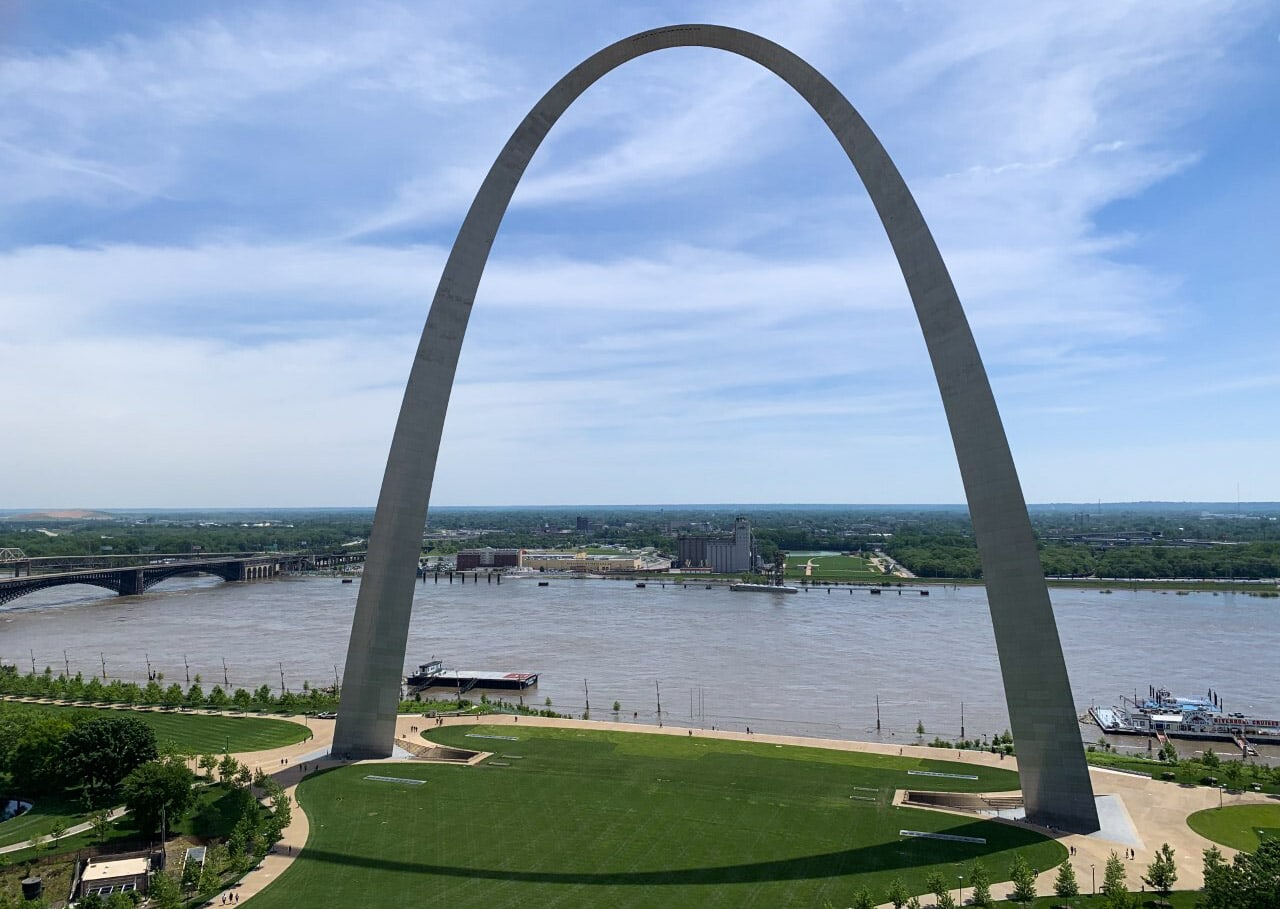
Visiting Gateway Arch National Park in February
The National Park Service itself says that “winter is a perfect time to visit” Gateway Arch National Park. “There are no lines for the trams, no waiting for movies, and the weather is surprisingly mild. Prolonged periods of extremely cold weather are rare.”
There’s also the added benefit that Gateway Arch, the smallest of all U.S. national parks, is located in downtown St. Louis. Because the city has plenty of attractions to offer, too—both indoors and outdoors—you’ll always find something to do regardless of the weather.
Additionally, the main highlights of Gateway Arch National Park are inside anyway, such as the Old Courthouse, the ride to the top of the arch, and the award-winning park film at Tucker Theater.
So, visit Gateway Arch National Park in February to beat the crowds!
More About Gateway Arch National Park
7. Haleakalā National Park, Hawaii
Location: Eastern half of Maui, Hawaii
Expected Crowds: Moderate
Weather: The average high temperature is 75°F (24°), while the average low temperature is 71°F (22°C). (Note that these are averages for the entire park. The high-elevation Summit District is significantly colder than the tropical and coastal Kīpahulu District.) Rainfall is possible every day in Kīpahulu; the Summit District is much drier.
Average Sunrise Time: 6:55 am
Average Sunset Time: 6:22 pm
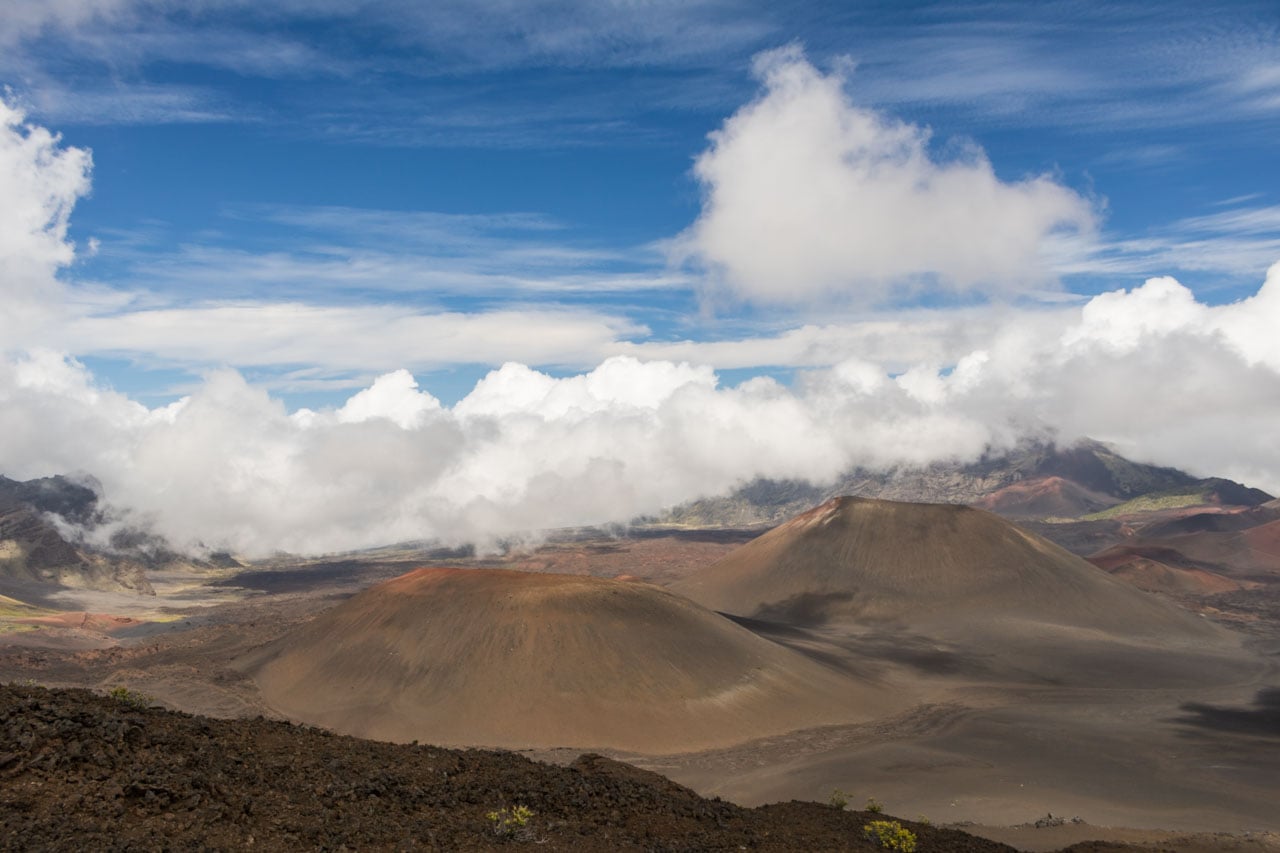
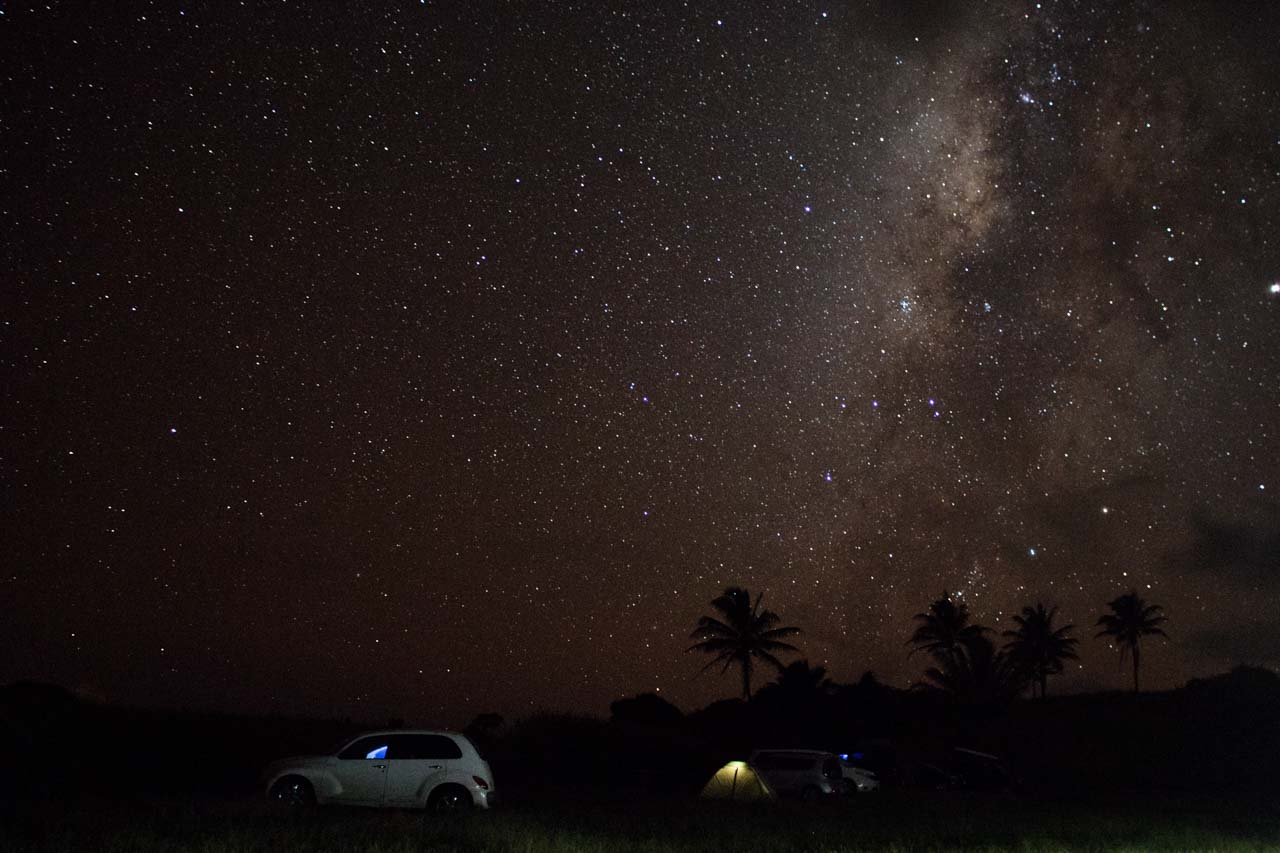
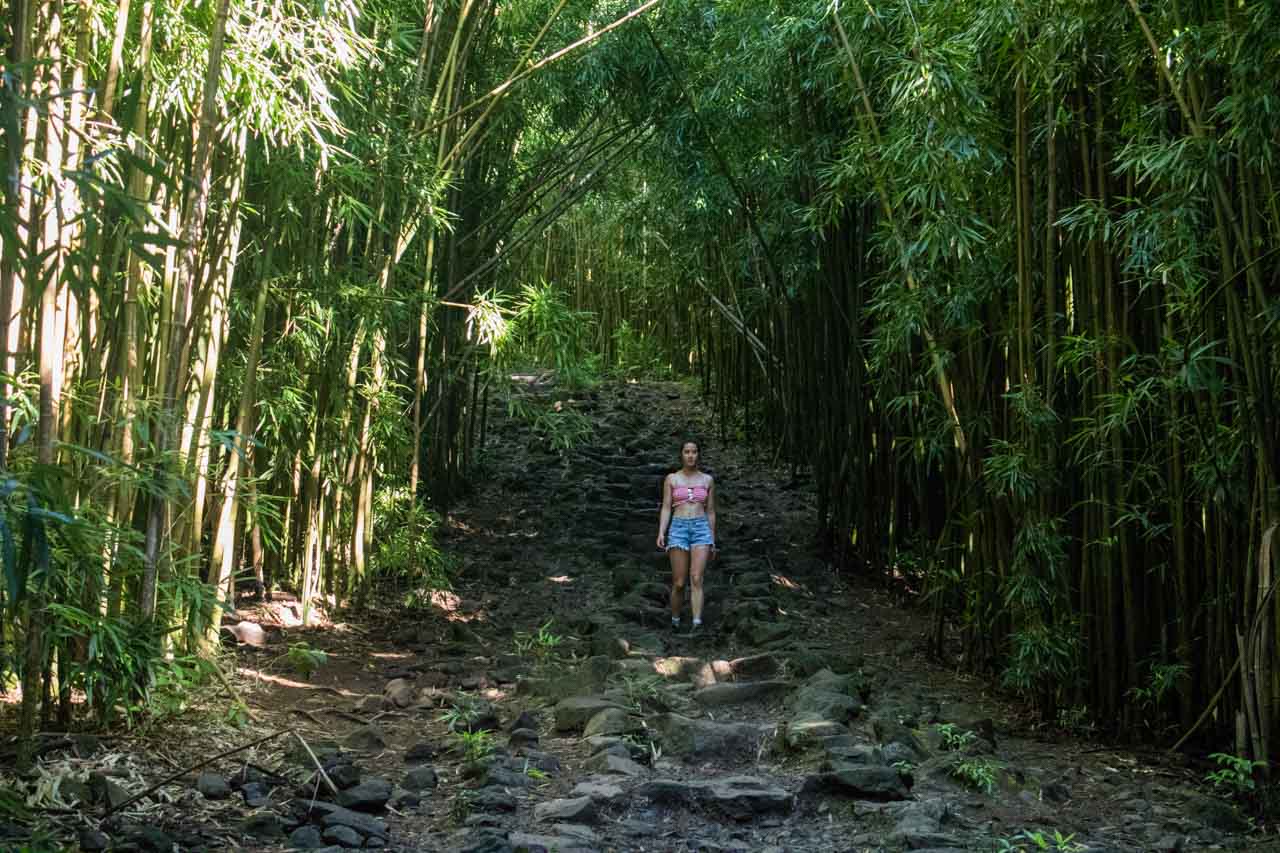
Visiting Haleakalā National Park in February
Even though winter is the “wet” season in Hawaii, that doesn’t mean visiting the Hawaiian national parks is a bad idea. Rather the contrary, in fact, February in Hawaii is absolutely amazing—I can’t imagine many other places that are better to escape winter on the mainland.
Temperatures remain high throughout the year in most areas, while more precipitation means even lusher tropical scenery.
Haleakalā National Park in Maui, for example, is a great place to visit in February. Thanks to its wide range of elevations between the coastal Kīpahulu District and the Summit District, there’s usually some enjoyable weather to be found somewhere in the park.
The Kīpahulu District has daytime temperatures that range between 70 and 80 degrees year-round, including in winter. This lush area, home to palm trees, waterfalls, and natural swimming holes, does get its fair share of rainfall, though, so remember to bring appropriate clothing.
At the spectacular summit of Haleakalā, it can get significantly colder. The National Park Service says that “on average, the temperature drops about 3°F for every 1,000 foot rise in elevation, making the 10,023-foot summit of Haleakalā about 30°F cooler than the coast.”
Popular activities in Haleakalā National Park in February include camping, hiking, bird watching, photography, sunrise and sunset viewing, and stargazing.
More About Haleakalā National Park
- Park Website
- Travel Guide
- Topographic Map
- Best Haleakalā Hikes
- Top Things To Do in Haleakalā National Park
- Accommodation
8. Hawai‘i Volcanoes National Park, Hawaii
Location: Southwestern portion of the Big Island, Hawaii
Expected Crowds: Moderate
Weather: The average high temperature is 72°F (22°C), while the average low temperature is about 54°F (12°C). (Note that there are significant temperature differences between the Kīlauea summit and the coastal area at the end of the Chain of Craters Road. Additionally, the summit of massive Mauna Loa can have freezing temperatures and even snow in any month of the year.) At Kīlauea, the most popular part of the park, rainfall and fog are possible any day in February, as well as in most other months.
Average Sunrise Time: 6:49 am
Average Sunset Time: 6:19 pm
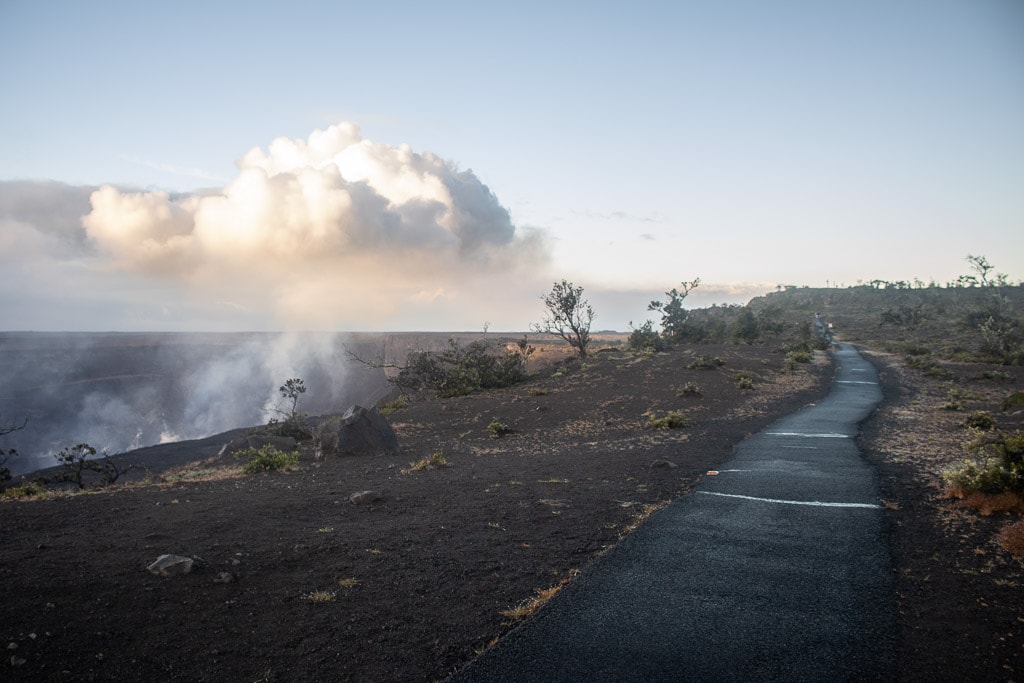
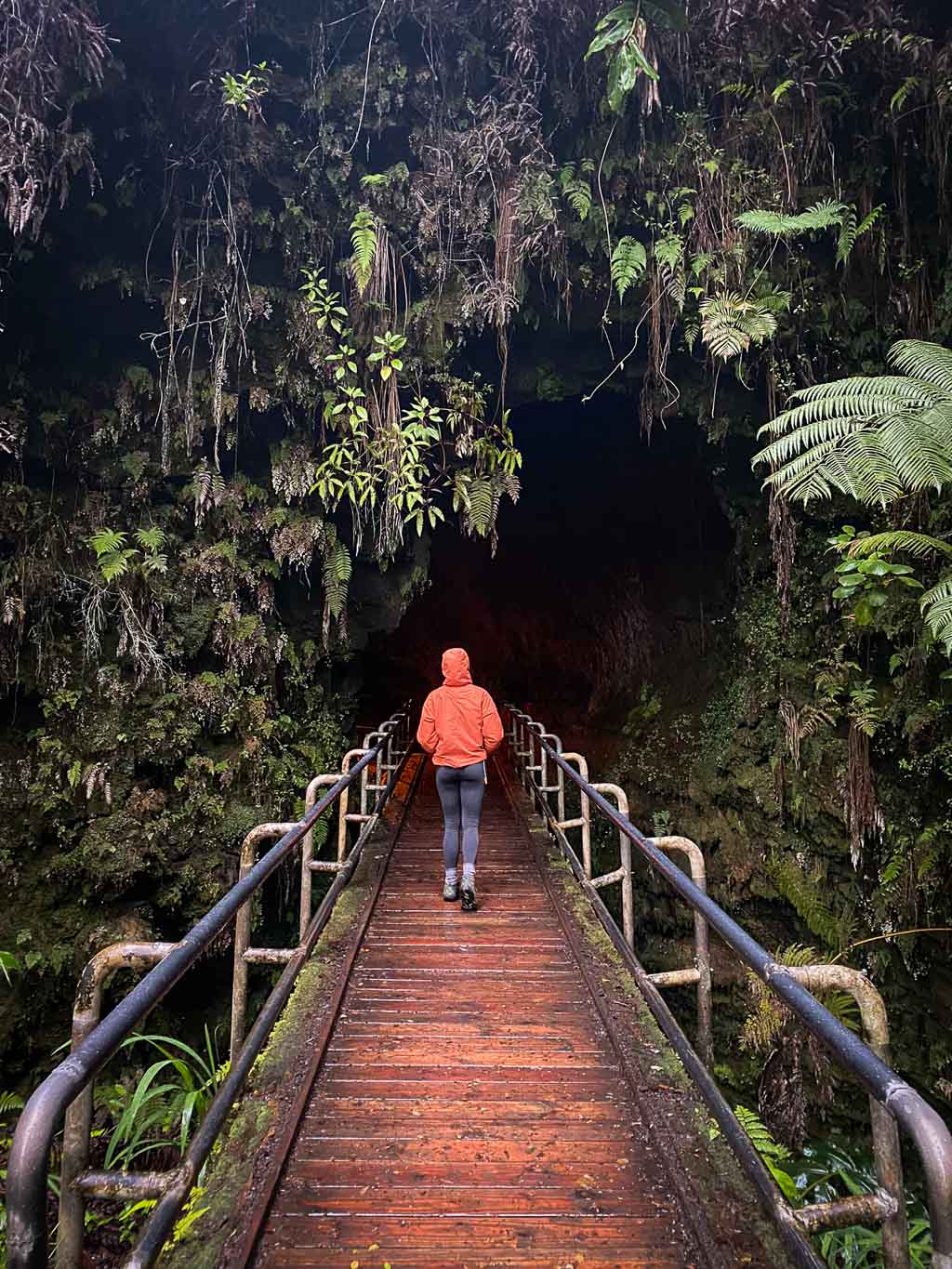
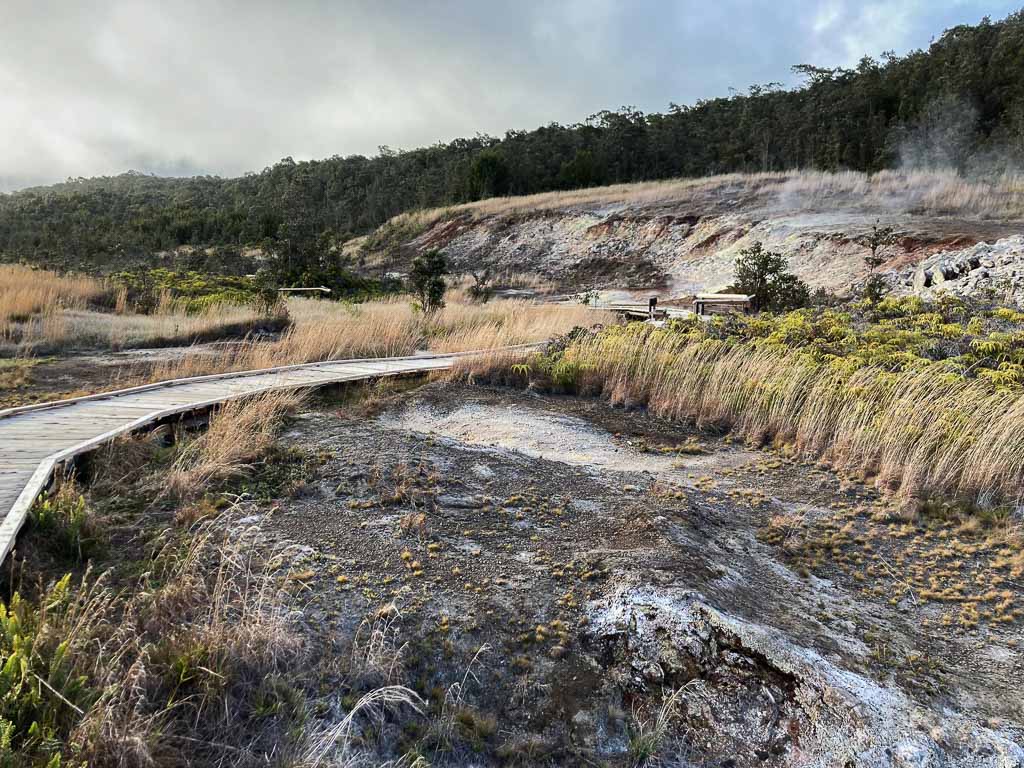
Visiting Hawai‘i Volcanoes National Park in February
The second national park in Hawaii is Hawai‘i Volcanoes National Park, located on the Big Island. Home to both Kīlauea and Mauna Loa, two of the most active and biggest volcanoes on the planet, this is one of my favorite national parks to visit in February.
There are no distinctive seasons in Hawai‘i Volcanoes National Park. This basically means that temperatures in winter are as enjoyable as those in summer, although winters may be a bit wetter on average.
That said, the park is notorious for its rapidly changing weather—mist can roll in at any time, while evenings usually bring some rainfall. Chilly temperatures can also occur unexpectedly. Prepare and bring proper clothing for both sunny and rainy weather.
The park’s significant precipitation does, on the other hand, result in a gorgeous rain forest wonderland.
Numerous hiking trails run through verdant tropical forests, some descending into volcanic craters, others leading to jaw-dropping views. The park also has a few scenic drives, which run past historic sites, overlooks, and other attractions.
Visitation numbers are fairly steady throughout the year, mainly because the park’s weather doesn’t change much. They usually peak around holiday periods, such as Christmas, New Year’s, and the Fourth of July, as well as whenever one (or both) of the park’s volcanoes are erupting.
February is usually a relatively busy time in this unique national park, mainly because it’s such a fantastic place to escape the cold winter weather on the mainland.
More About Hawai‘i Volcanoes National Park
- Park Website
- Travel Guide
- Topographic Map
- Best Hawai‘i Volcanoes Hikes
- Top Things To Do in Hawai‘i Volcanoes National Park
- Best Views in Hawai’i Volcanoes
- Accommodation
9. Joshua Tree National Park, California
Location: Southern California
Expected Crowds: Moderate to high
Weather: The average high temperature is about 63°F (17°C), while the average low temperature is 41°F (5°C). Typical daytime temperatures are quite comfortable, while nights can be freezing in February. The monthly precipitation average is merely 1 inch (25.4 mm) in total. Although that’s pretty low, February still is the “wettest” month of the year in the park. Snow is uncommon but possible in February, particularly at higher elevations.
Average Sunrise Time: 6:29 am
Average Sunset Time: 5:25 pm
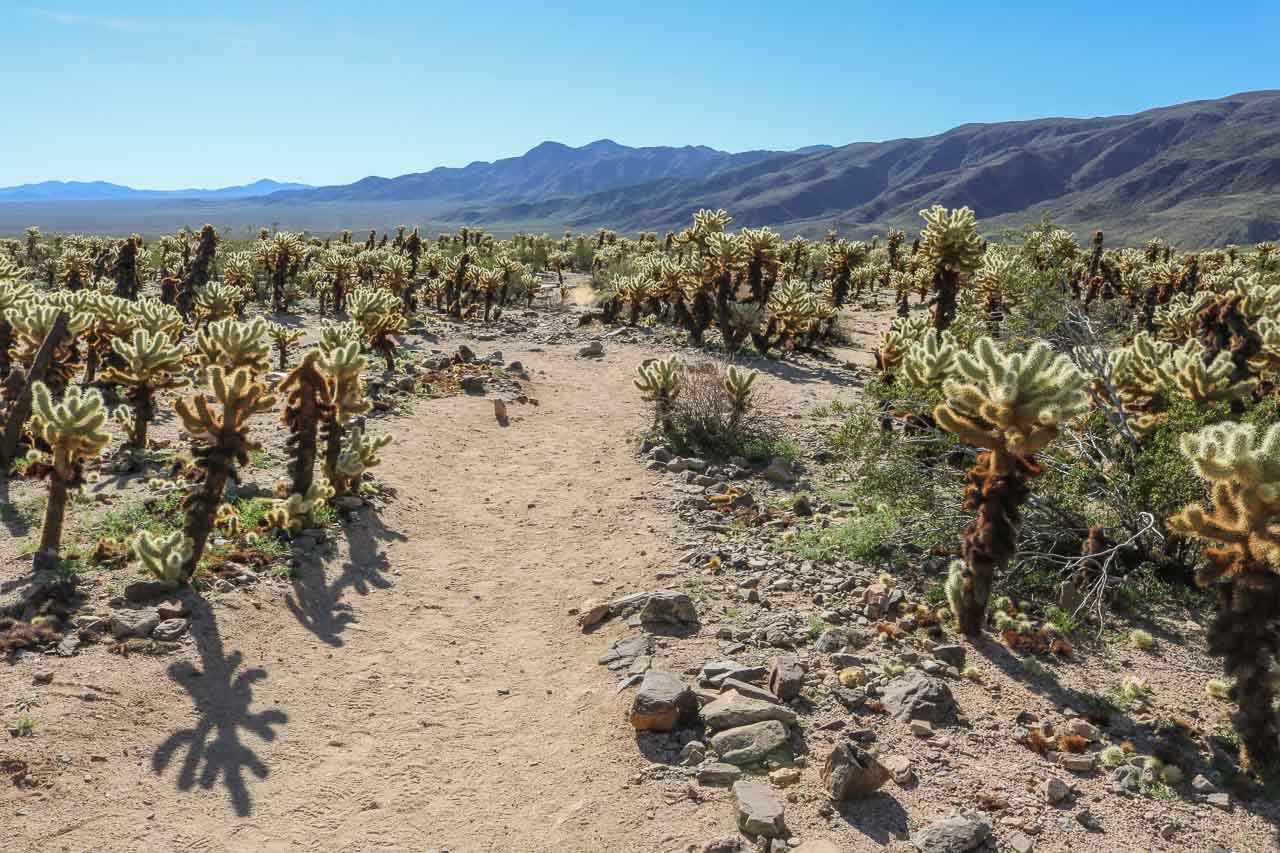
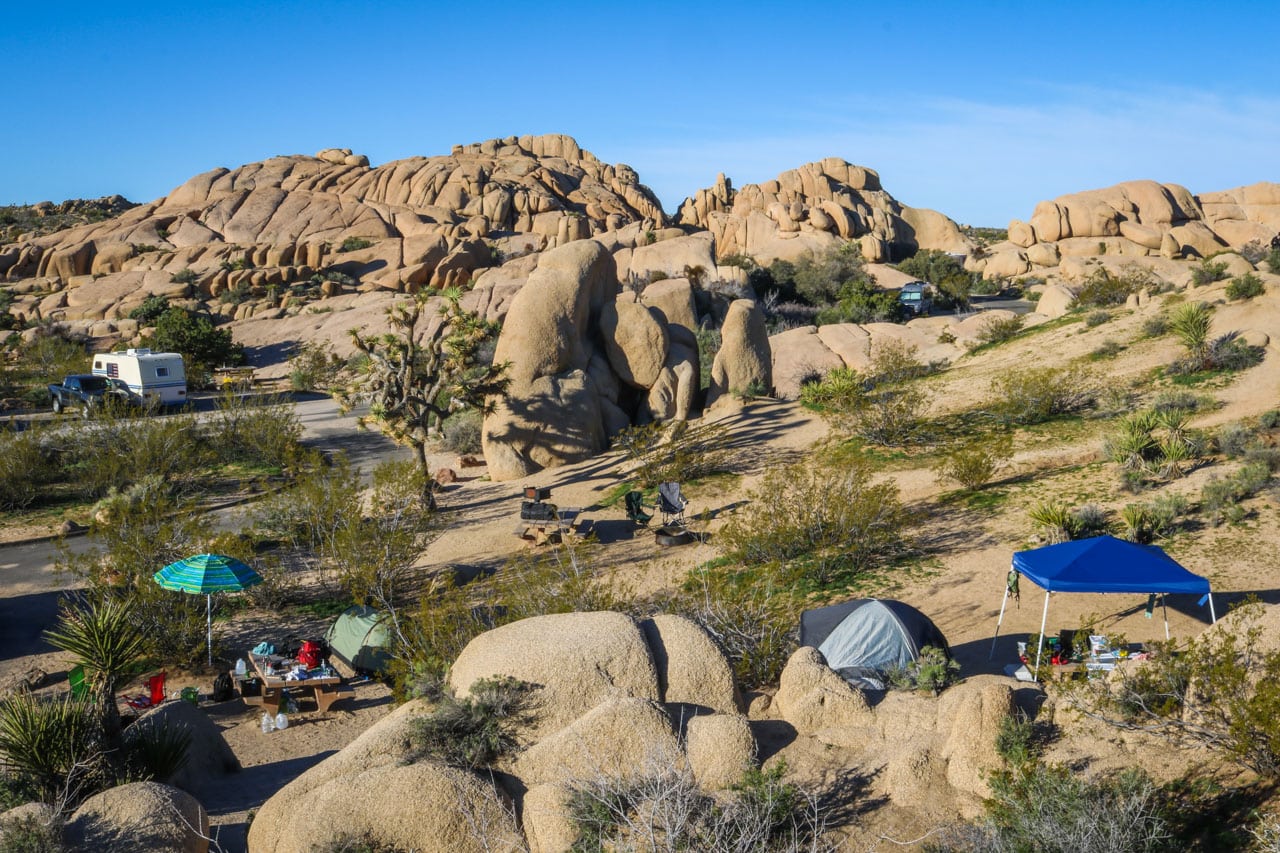
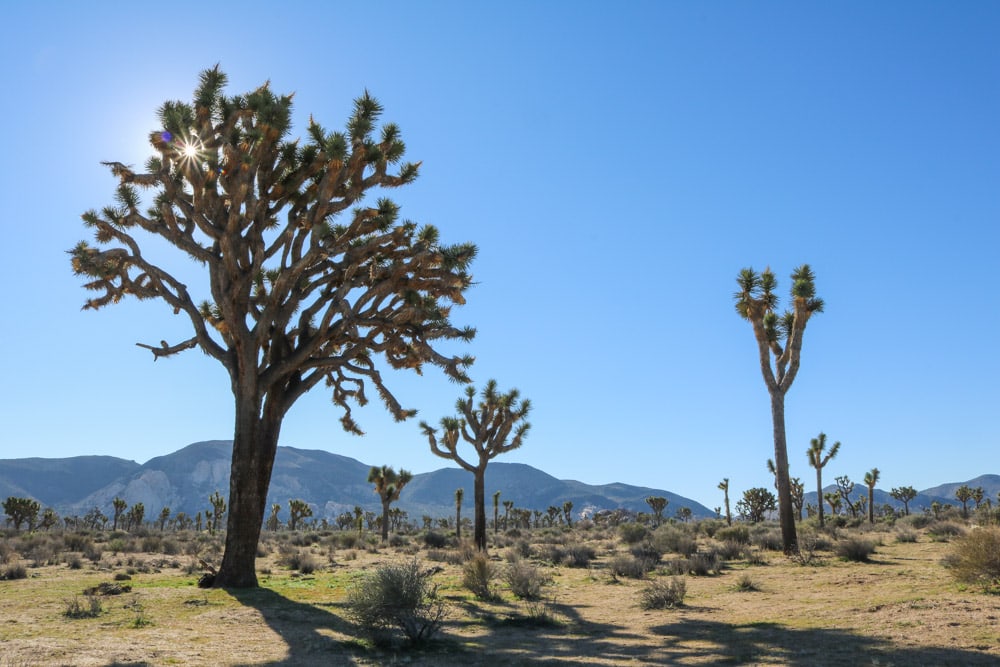
Visiting Joshua Tree National Park in February
February is the definition of a shoulder month in Joshua Tree National Park. During this month, visitation numbers range between those of the quiet summer season and the peak spring and late-fall seasons.
Even though it’s still technically the middle of winter, February is essentially the start of the busy spring season in Joshua Tree National Park. That said, though, it’s much, much quieter this month than it is during the Spring Break months of March and April.
Weatherwise, February is the wettest month of the entire year in Joshua Tree, although that must be taken with a big grain of salt. Total precipitation throughout the month is no more than 1 inch. The mountains may occasionally get a dusting of snow, too.
Daytime temperatures are relatively comfortable, reaching well into the 60s, which allows you to explore most of the park’s amazing hiking trails in February. Anyone camping in Joshua Tree National Park in February, however, should prepare for below-freezing temperatures.
More About Joshua Tree National Park
- Park Website
- Travel Guide
- Topographic Map
- Best Joshua Tree Hikes
- Top Things To Do in Joshua Tree National Park
- Best Views in Joshua Tree National Park
- Accommodation
10. Mammoth Cave National Park, Kentucky
Location: Southern Kentucky
Expected Crowds: Very low
Weather: The average high temperature is about 46°F (7°C), while the average low temperature is 28°F (-2°). The temperature inside the cave, however, is a constant 54°F (12°C). Perhaps surprisingly, February is one of the driest months of the year in Mammoth Cave National Park, with a total precipitation of 3.87 inches (98.3 mm). Mild to moderate snow is possible throughout February.
Average Sunrise Time: 6:34 am
Average Sunset Time: 5:23 pm
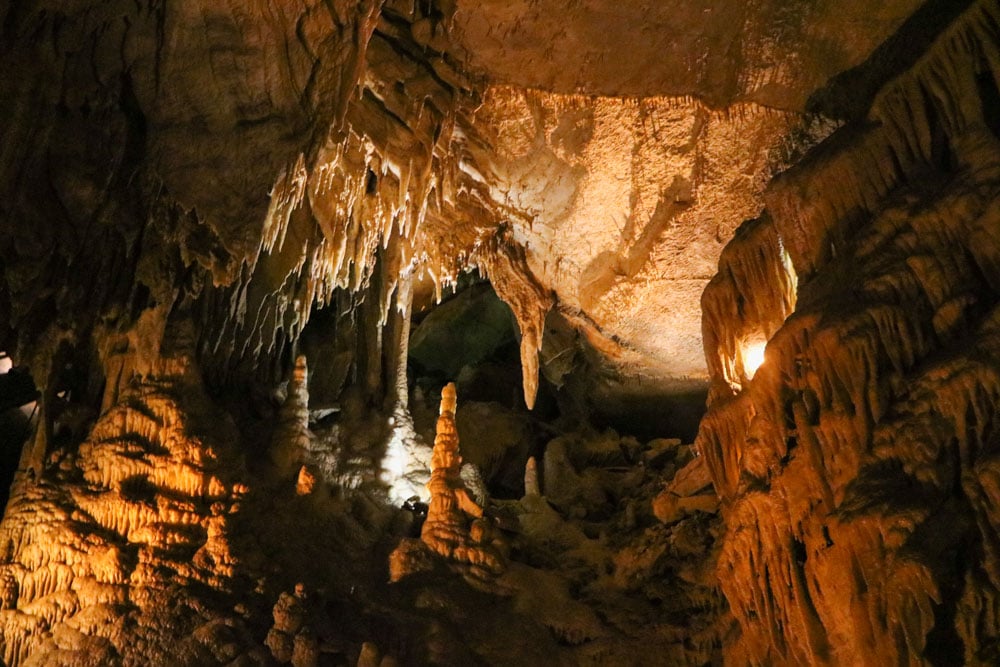
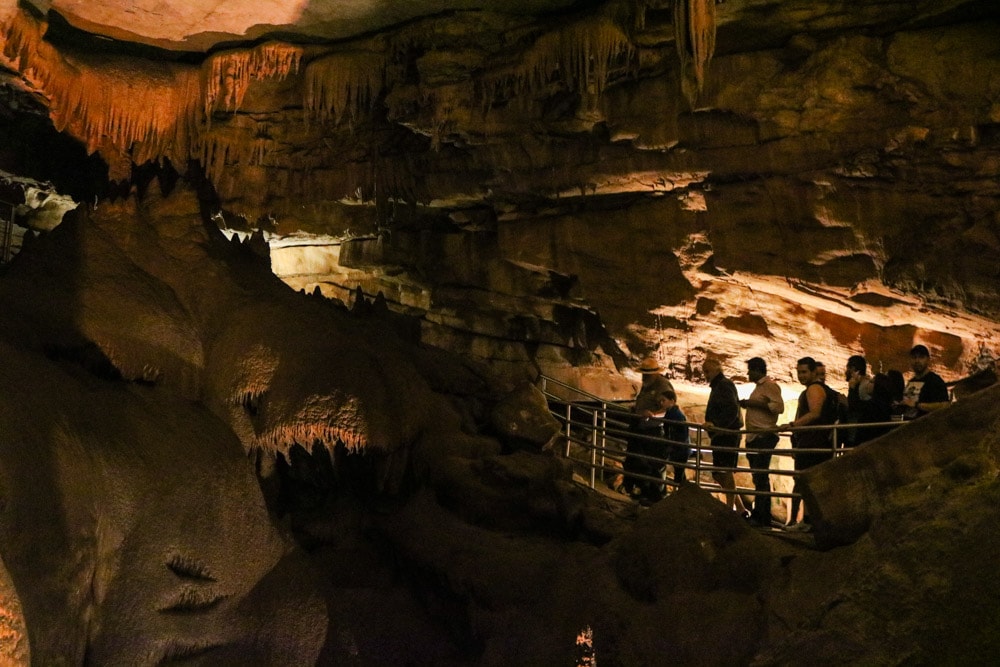
Visiting Mammoth Cave National Park in February
The temperature within Mammoth Cave, the longest known cave system in the world, is a constant 54°F, so you can visit the cave year-round. Moreover, February is one of the quietest periods in the park in terms of visitation—by far.
Although there aren’t as many options as in the busy summer season, there are still a variety of cave tours available every day throughout February.
The biggest benefit of visiting Mammoth Cave National Park in February is that you (most likely) won’t have to wait in line for cave tours because visitation is so low.
Above-ground, the weather in February is on the chillier side, but it’s still possible to hit some of the trails in Mammoth Cave National Park if you so desire. Note, though, that some snow and ice may occur, while frost is quite common during the nighttime.
More About Mammoth Cave National Park
11. Pinnacles National Park, California
Location: Central California
Expected Crowds: Moderate
Weather: The average high temperature is 63°F (17°C), while the average low temperature is 45°F (7°C). Nightly frost is possible throughout February. The monthly precipitation average is 4 inches (101.6 mm) in total, making this the wettest month of the year in Pinnacles. On sunny days, however, this is a gorgeous time to explore this small California national park.
Average Sunrise Time: 6:54 am
Average Sunset Time: 5:43 pm
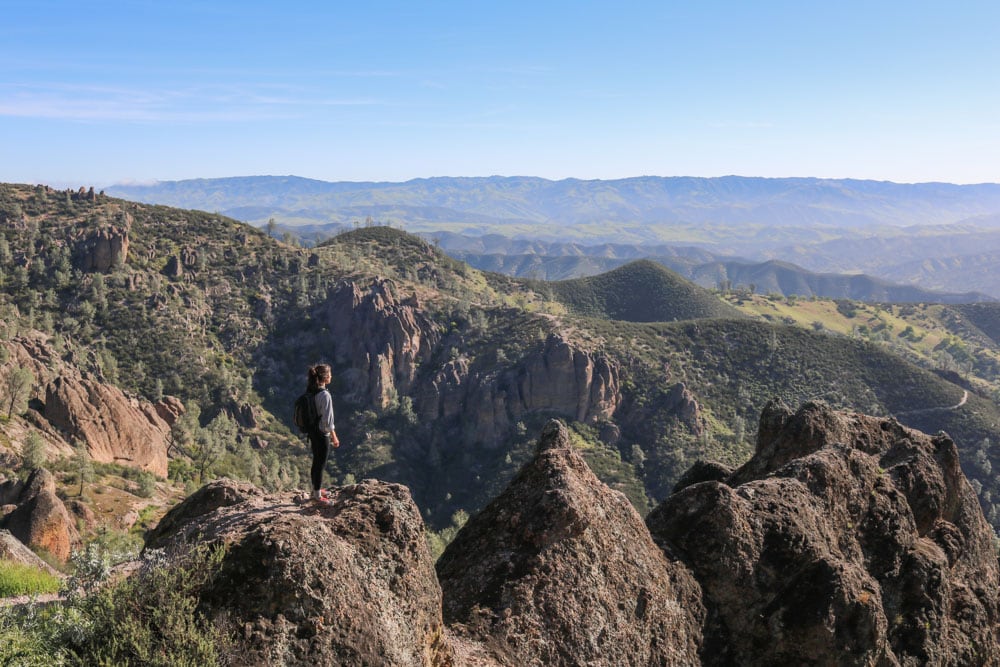
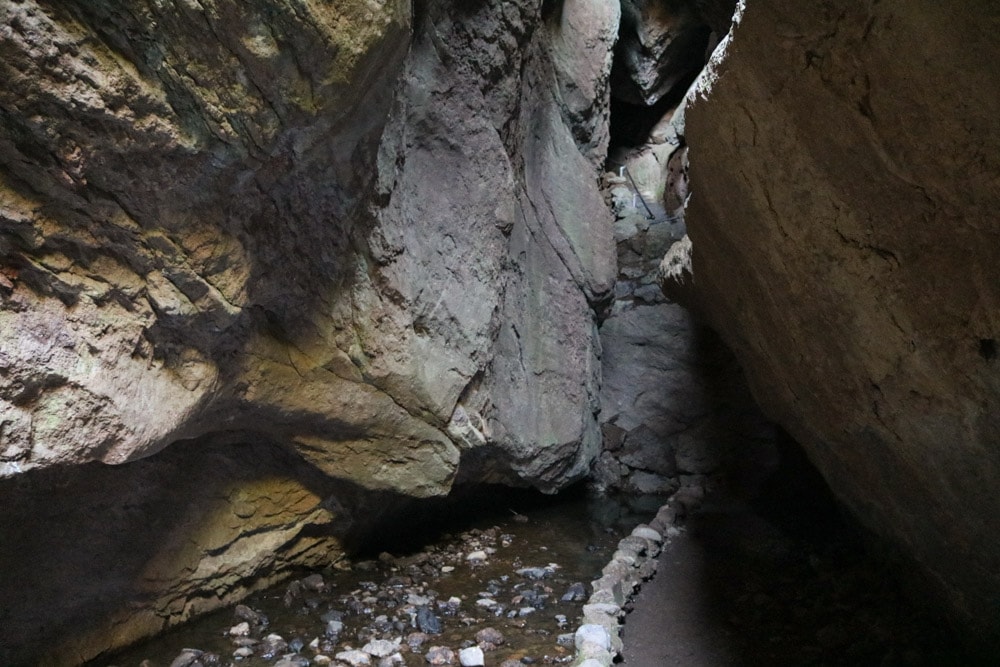
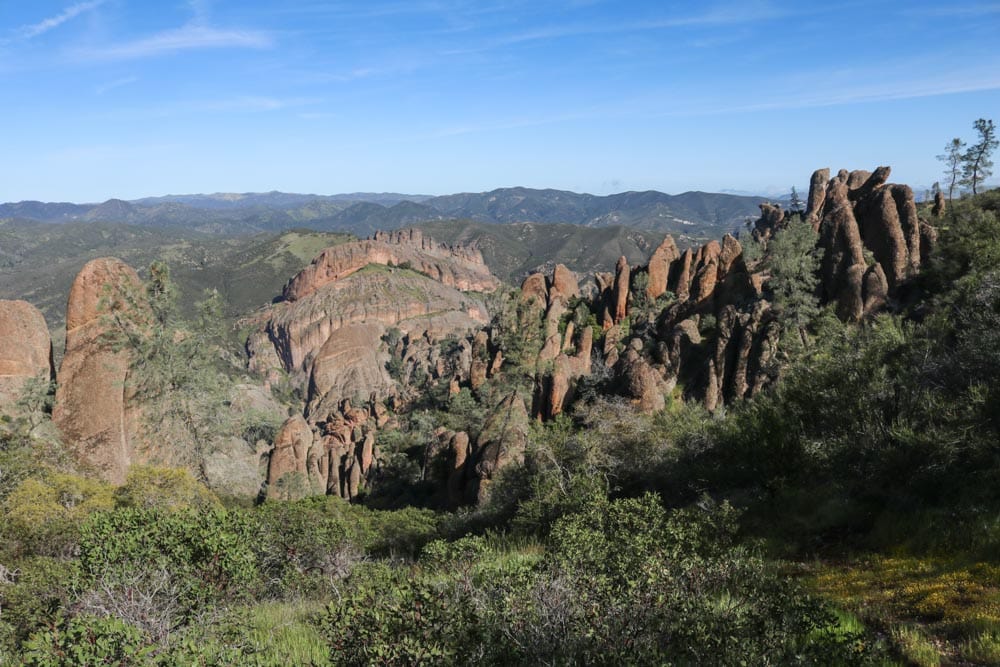
Visiting Pinnacles National Park in February
Although February may be just too early to fully take advantage of the region’s beautiful spring weather, it’s still a great month to visit Pinnacles National Park.
If you’re prepared for occasional rain showers and, if camping, overnight frost, you can have an absolute blast in this little but beautiful national park.
After all, daytime temperatures are well in the 60s, more than comfortable to explore the park’s network of hiking trails, its talus caves, or try some rock climbing—a very popular activity in Pinnacles. (If it is rainy, make sure to check trail conditions beforehand, though.)
Additionally, Pinnacles is also renowned for its unique bird watching opportunities, which are as good in February as in any other month of the year. Watch for iconic species like peregrine falcons, greater roadrunners, California condors, wild turkeys, California quails, and golden eagles.
More About Pinnacles National Park
- Park Website
- Travel Guide
- Best Pinnacles Hikes
- Top Things To Do in Pinnacles National Park
- Accommodation
12. Saguaro National Park, Arizona
Location: Southern Arizona
Expected Crowds: High
Weather: The average high temperature is 70°F (21°C), while the average low temperature is 44°F (7°C). Sporadic rain showers can occur about once a week in February and other winter months. Snow is possible, too, especially in higher-elevation areas of the park. Still, about 60% of February days have completely or mostly clear skies—plenty of sunshine in other words.
Average Sunrise Time: 7:06 am
Average Sunset Time: 6:08 pm
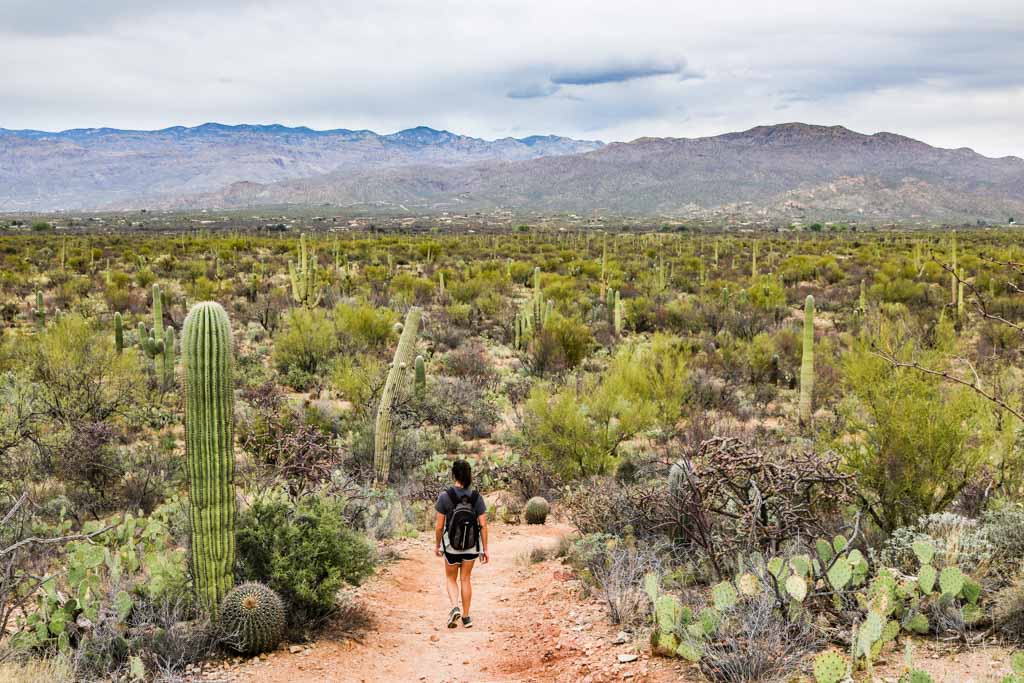
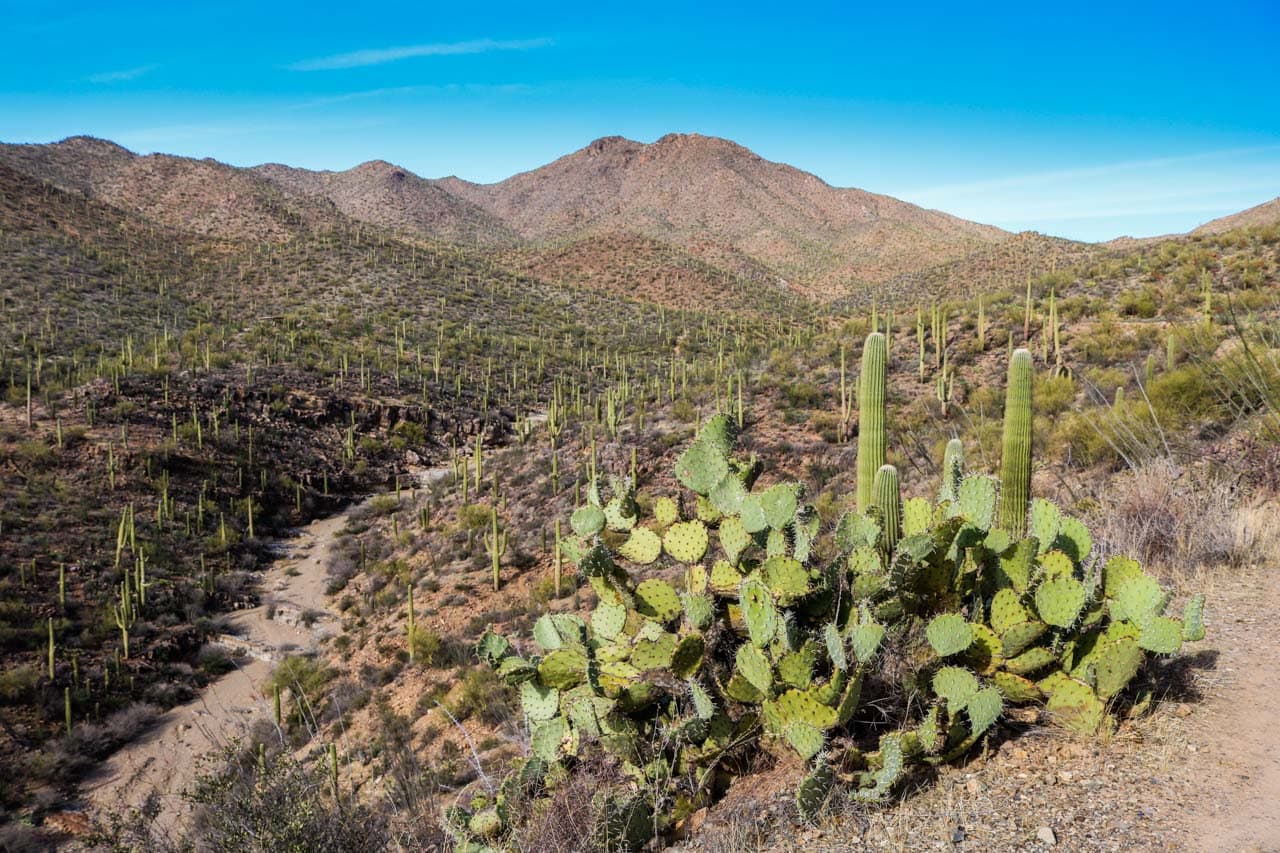
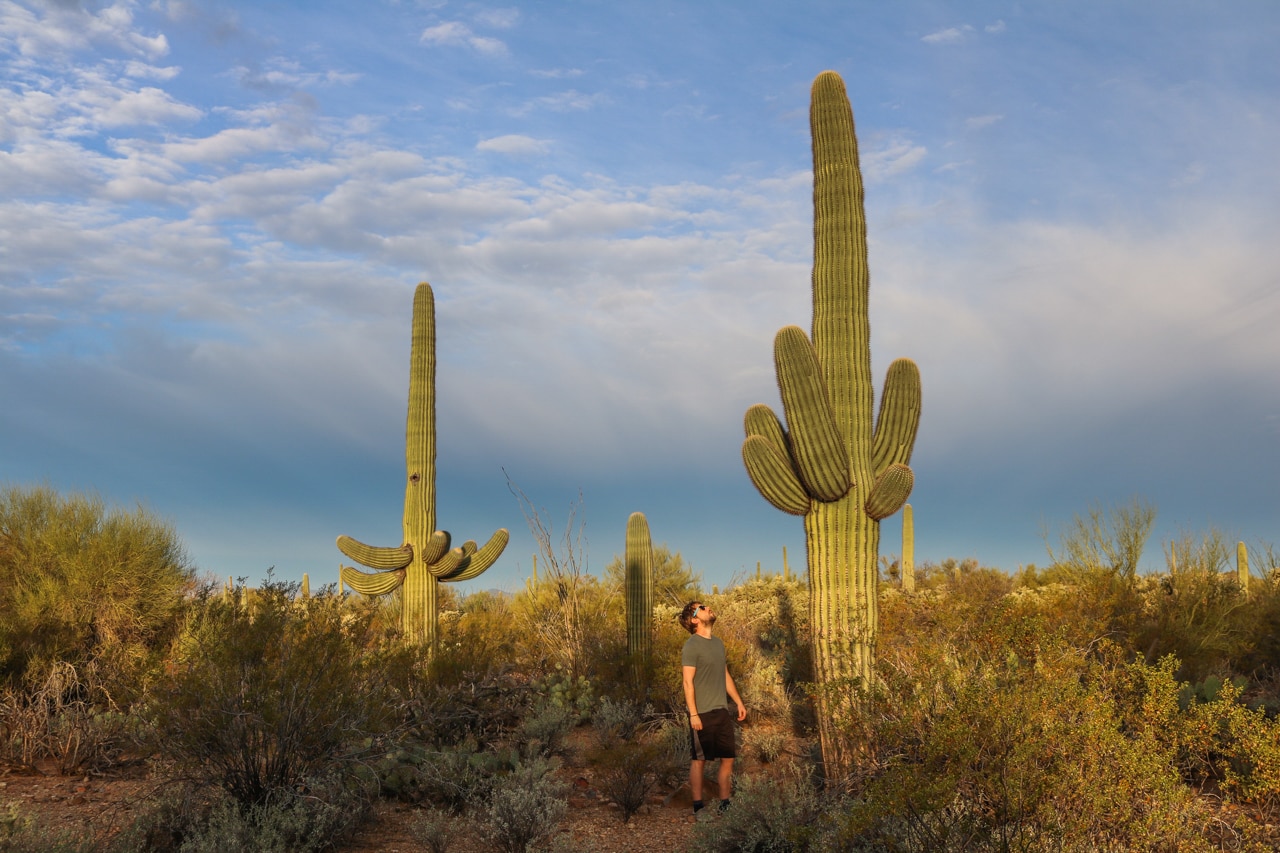
Visiting Saguaro National Park in February
As the last full month of winter, February is the third-coldest month of the year in Saguaro National Park, after December and January. However, with an average high temperature of 70°F, things could be much worse.
Thanks to its relatively warm winter temperatures, Saguaro National Park in southern Arizona is at its busiest from November through March. Being well in the middle of that period, February is one of the busiest months in Saguaro. Don’t let that deter you from visiting, though!
There are plenty of opportunities to get away from the crowds, which are still relatively small compared with other national parks anyway.
You can enjoy the amazing 70-plus-degree afternoons, which are often pretty sunny as well, on several excellent hiking trails in Saguaro National Park.
The King Canyon Trail to Wasson Peak, the Loma Verde Loop, and Tanque Ridge Trail are especially great for escaping the busy roadside areas. (Note that those higher elevations may have some snow, though, so check conditions before starting your hike.)
Additionally, its two separate districts—the Tucson Mountain District (West) and Rincon Mountain District (East)—both located on either side of Tucson, Arizona, have their own scenic drive. Both roads are open to motorists and cyclists alike throughout February.
More About Saguaro National Park
- Park Website
- Travel Guide
- Topographic Map
- Best Saguaro Hikes
- Top Things To Do in Saguaro National Park
- Accommodation
13. Virgin Islands National Park, U.S. Virgin Islands
Location: Most of the island of St. John, U.S. Virgin Islands
Expected Crowds: Moderate to high
Weather: The average high temperature is 84°F (29°C), while the average low temperature is 74°F (23°C). February is in the dry season, with the chance of rainfall remaining exceptionally low throughout the month. A little precipitation is possible in February, especially in the morning, but major storms are rare.
Average Sunrise Time: 6:46 am
Average Sunset Time: 6:18 pm
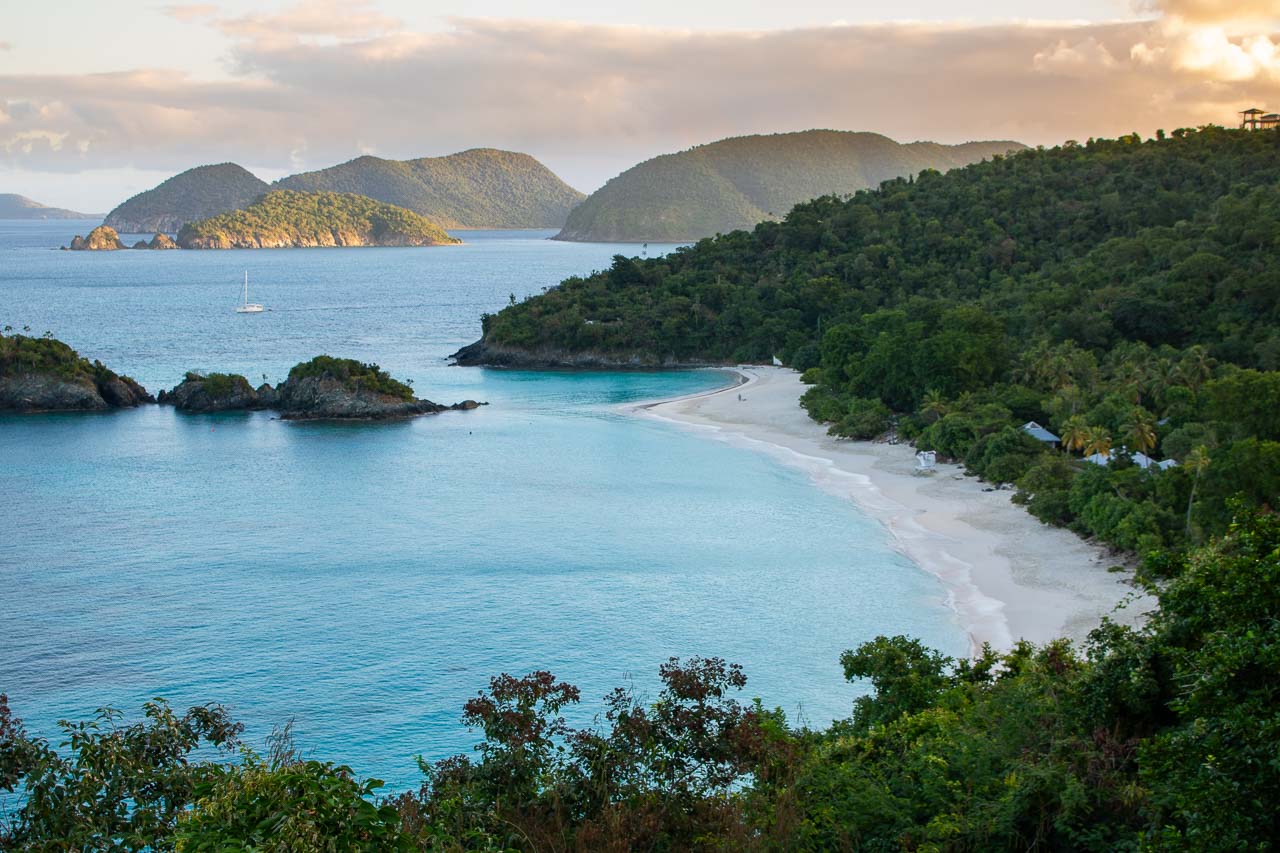
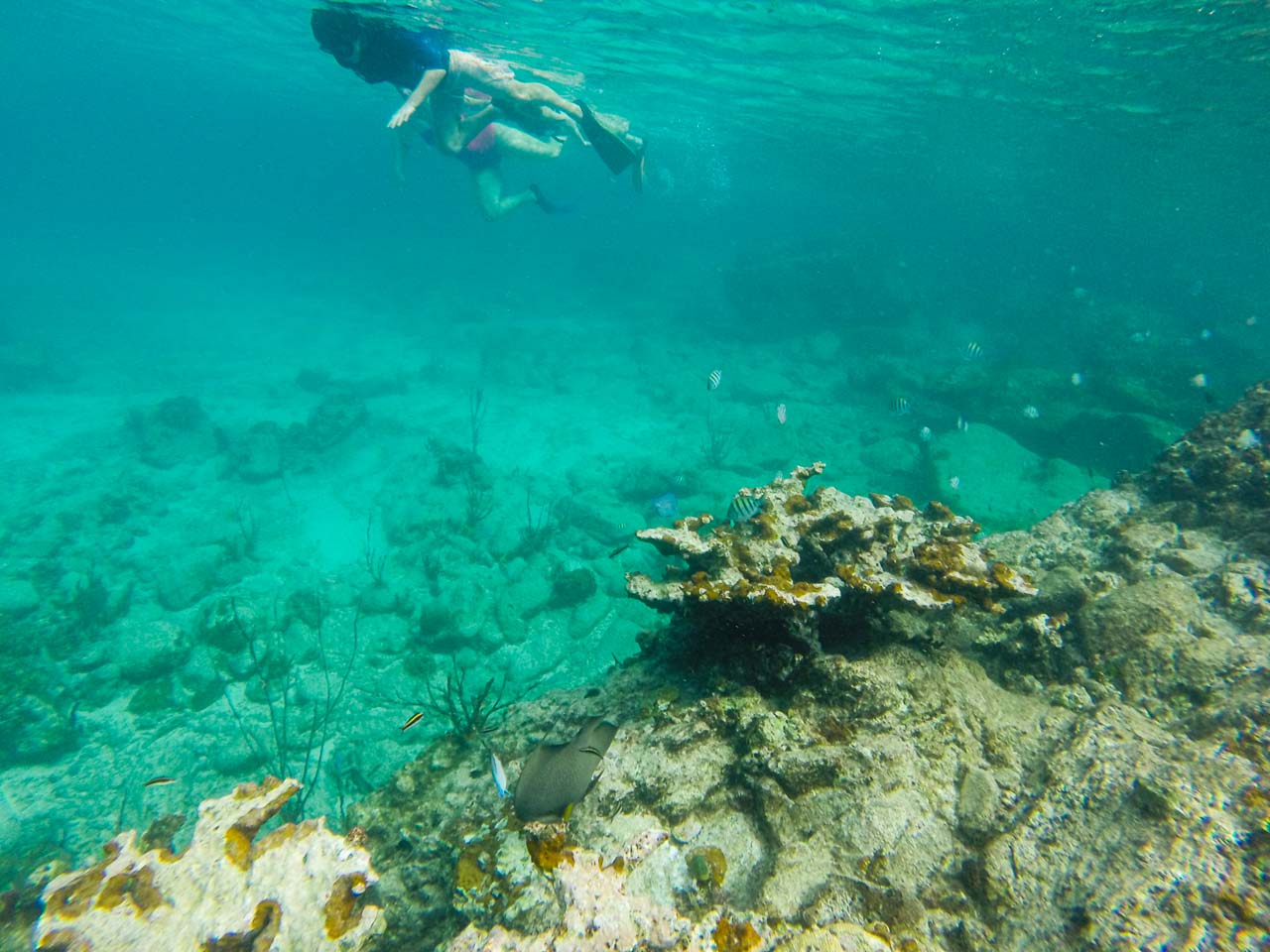
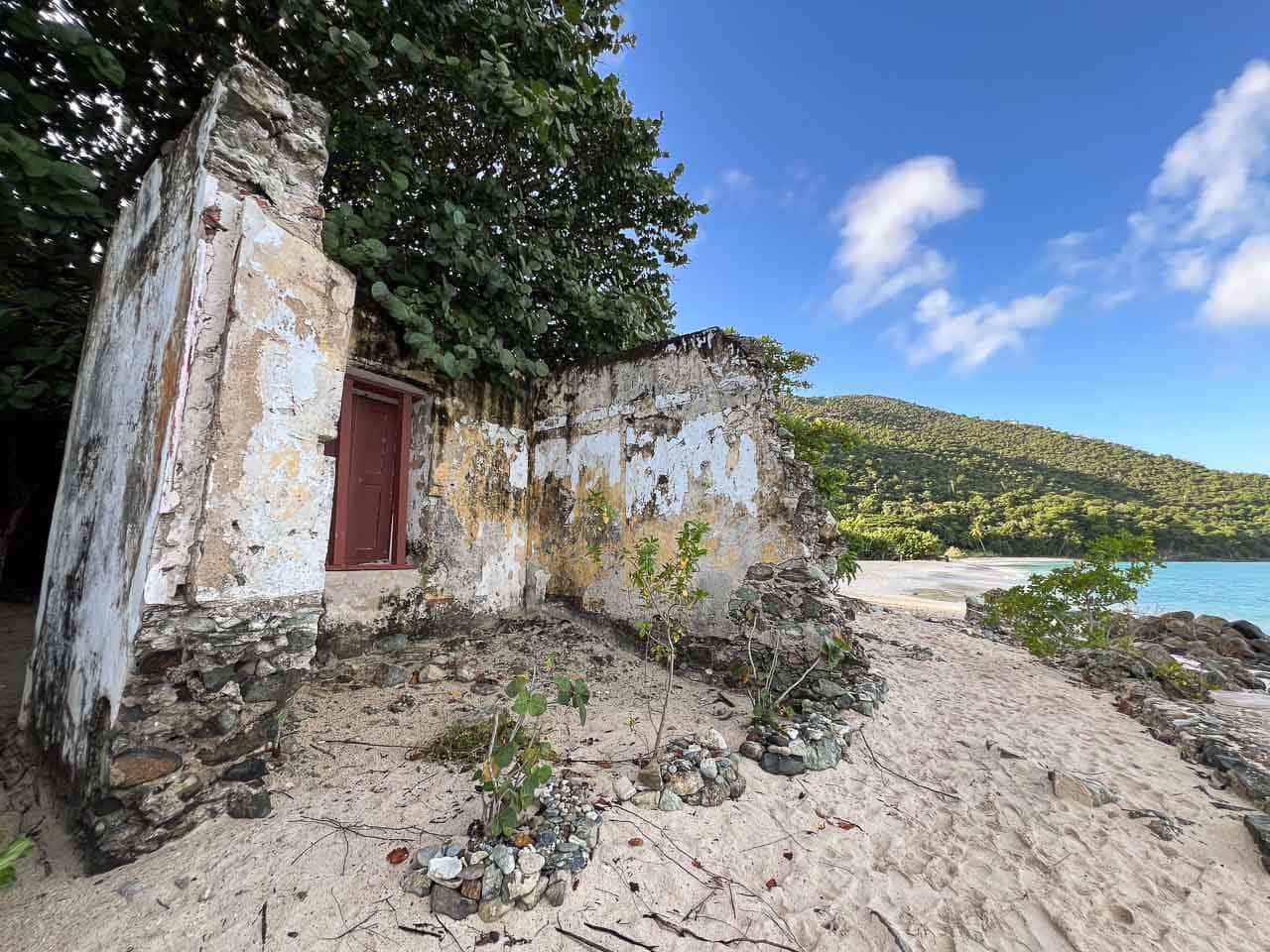
Visiting Virgin Islands National Park in February
For a beach holiday in February, few national parks are better than Virgin Islands National Park. Very few places in America allow you to spend February snorkeling, sunbathing, swimming, and relaxing under palm trees quite like the U.S. Virgin Islands do.
In fact, I don’t think there’s a national park that’s greater for tropical beach vacations than Virgin Islands National Park—especially in February.
This is the dry season in the Virgin Islands and much of the rest of the Caribbean. Chances of precipitation are low throughout the entire month—only March is slightly drier—while temperatures are perpetually high and sunshine is plentiful.
This is arguably the warmest, sunniest, and driest national park you can visit in February.
Popular things to do in Virgin Islands National Park in February include glamping at Cinnamon Bay Beach, turtle viewing at Maho Bay Beach, exploring historic sugar plantation ruins, and snorkeling at Trunk Bay Beach, which is considered one of the world’s most beautiful beaches.
More About Virgin Islands National Park
- Park Website
- Travel Guide
- Topographic Map
- Best Beaches in Virgin Islands National Park
- Best Hikes in Virgin Islands National Park
- Historic Plantation Ruins in Virgin Islands National Park
- Scenic Views in Virgin Islands National Park
- Virgin Islands National Park Snorkeling Guide
- Accommodation
When to Visit National Parks
For a nice visual overview of when to visit the national parks, I recommend checking out my national parks calendar in this blog post. It highlights the best months to visit each of the 63 U.S. national parks, which should help you plan your itinerary.
For an overview of the best national parks for a specific month, check out these blog posts (this is a series that is still in progress; I’ll add more months as I publish the posts):
- January: Best National Parks to Visit in January
- March: Best National Parks to Visit in March
- December: Best National Parks to Visit in December
Additionally, the following blog posts may also be helpful:
- Winter (cold): Best National Parks for Winter Wonderlands
- Winter (warm): Best National Parks for Warm Winter Getaways
- Spring: Best National Parks to Visit in Spring
- Summer: Best National Parks for Summer Island Vacations
- Fall: Best National Parks for Fall Foliage
